Ottawa, the Amsterdam of Canada?
Canals… Protected bike lanes… ok, it still has a ways to go, but spending a week in Ottawa, and for the first time, having my bike with me, I was able to explore a lot more than many previous trips, and there’s a lot of good things happening. Here’s what I came across…
Amsterdam or Ottawa?
A problem that occurred to me on this trip, is that when you go to specifically ride all the good bike infrastructure in a city, is that maybe you never see the bad, or experience the challenge of getting from A to B where there is none. I’m sure there are parts of the City that aren’t great for cycling, but I covered a fair bit of ground and did so feeling pretty safe.
That’s a good thing as I didn’t bring a helmet. Trying to travel somewhat light, a helmet is a bit of an awkward additional piece of luggage. I looked up Ontario’s helmet laws, and it turns out helmets are optional for adults. I rode everywhere without a helmet, and felt quite safe doing so. There’s definitely some truth about feeling less a “cyclist” and more a “human” when not wearing a helmet. Maybe that is perceived by drivers too. It’s definitely necessary if we’re to normalize riding a bicycle for transportation. Other provinces take note.
I was in Ottawa for the Transportation Association of Canada (TAC) committee meetings and presenting the work of the Active Transportation Integrated Committee (ATIC) on Continuous Sidewalks and Bike Paths that i’ve been leading as we try to integrate such designs into TAC guidance, but also simply inspire more cities to consider them. Something that is happening very quickly in many cities. Unfortunately work commitments would mean I didn’t see too much of the conference, but there were a lot of active modes presentations which I plan to catch up on when the recordings are made available.
After some changes to my flight times, I arrived in Ottawa on Friday night about an hour before sunset. I brought my folding Brompton bicycle with me, and I had debated unpacking the bike and riding from the airport when I arrived, but without my bearings and little daylight left, I passed this time. I would however ride back to the airport at the end of the trip which is always a cool experience assuming it’s safe.
Committee Meetings
Saturday would be a long day with meetings from 9am to 9pm. I had a break from 12pm to 3pm and planned to go out for a ride around the City. However, I had a train trip to Montreal planned for the free day I had on Sunday, and while the Via Rail train regulations do allow folding bicycles, they have to be covered up, so I had to find a cover for the bike that would fold up small enough to not get in the way when riding around Montreal. I took a short bike ride primarily along one of the canals to the one Brompton dealer in Ottawa, but they had no stock of the official Brompton bike cover.
TD Place Football Stadium on route to Brompton dealer
My next option was an Ikea Dimpa storage bag which is well known in Brompton circles as an alternate flight bag, albeit a very flimsy one. However, it would certainly do for taking my bike on the train and fold up small when I got to Montreal. With 2.5 hours left now until the next meeting and google suggesting a 45 minute trip time one-way. I headed west towards the Ottawa Ikea along the Experimental Farm Pathway which proved to be an interesting experience with some pretty good bike infrastructure almost the entire way that I otherwise would never have taken. I found my way through the University, onto closed farm roads and then multi-use pathways most of the way, had signalized crossings at many places, and then at the end, a somewhat debatable neighbourhood bikeway all the way to Ikea.

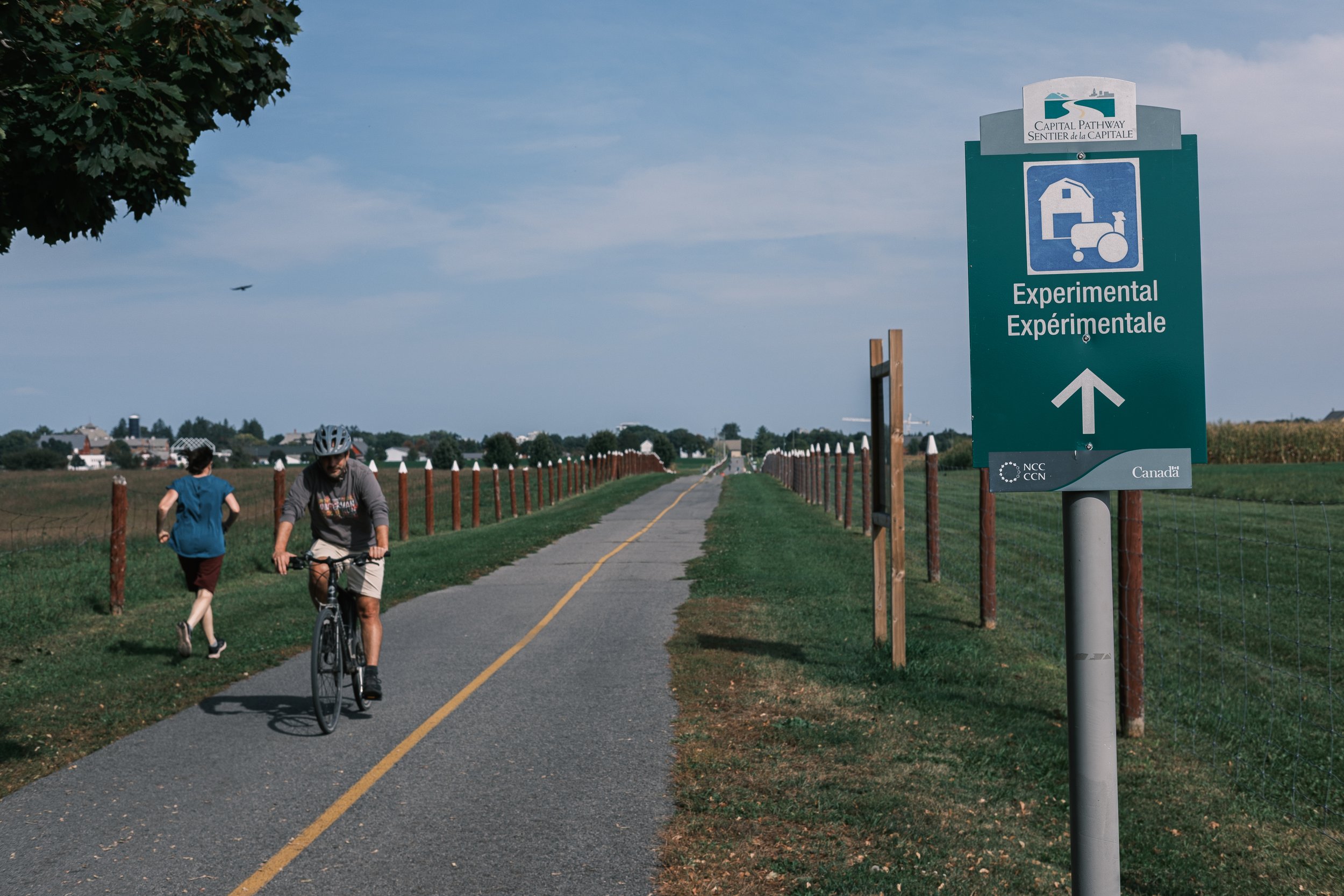
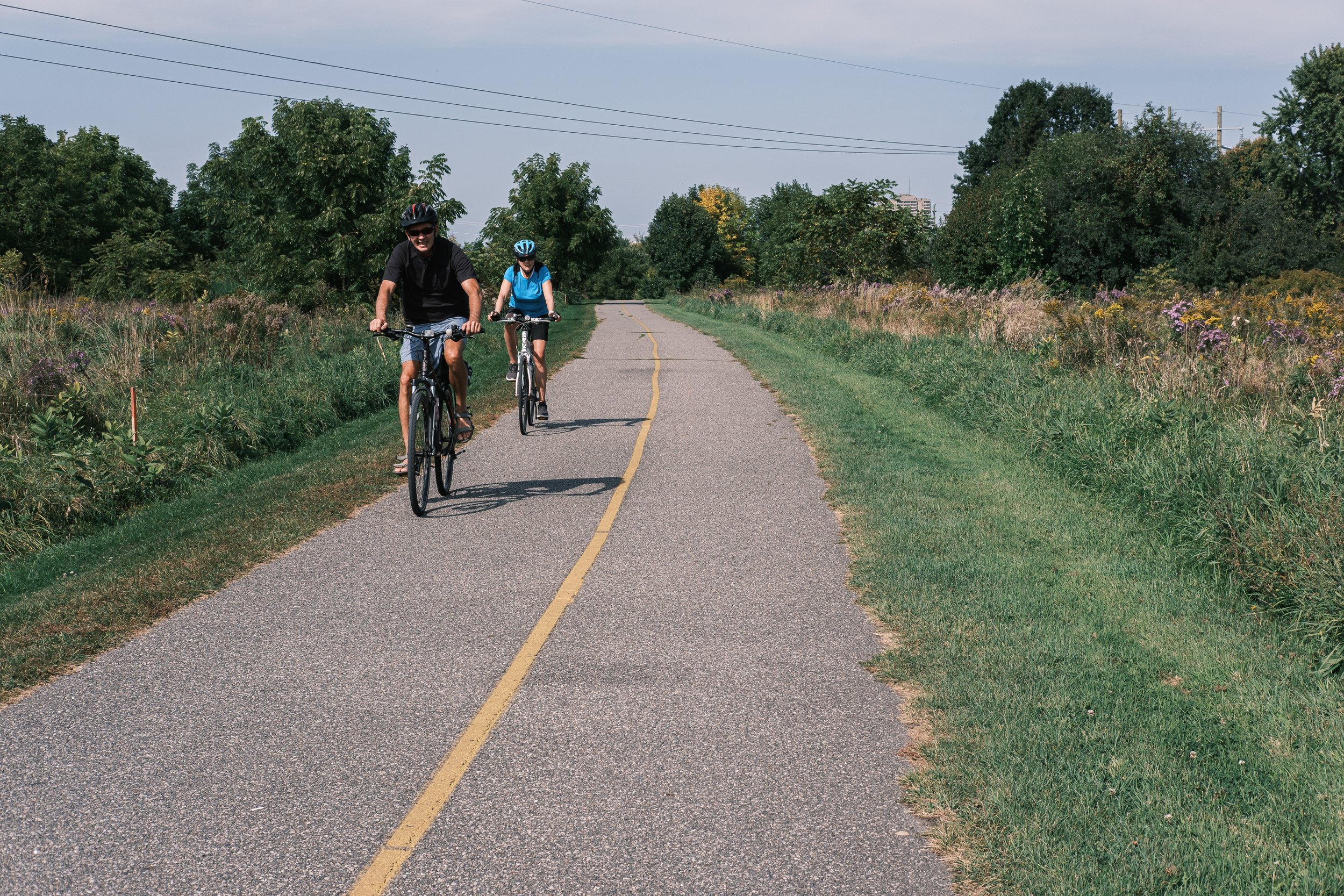
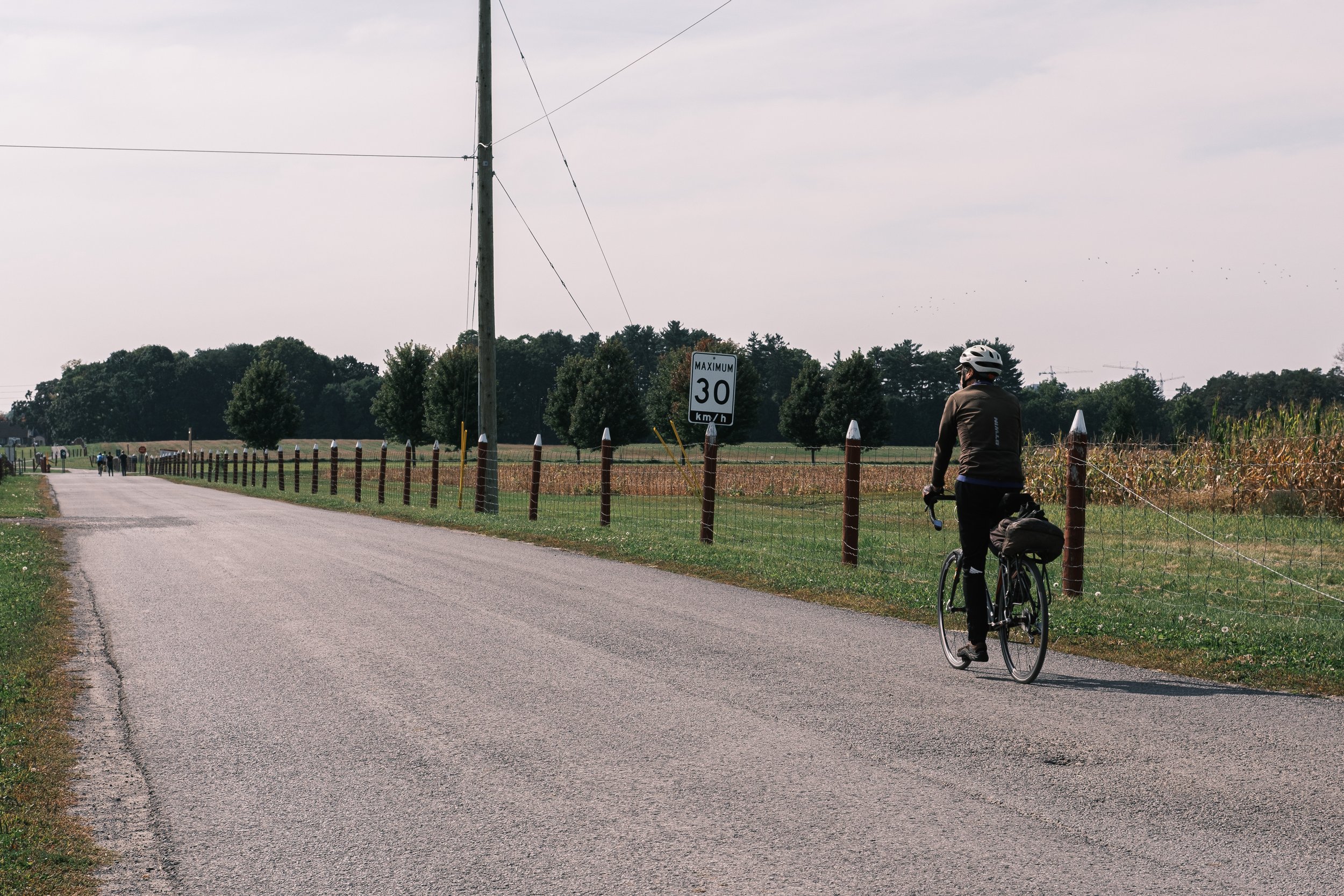
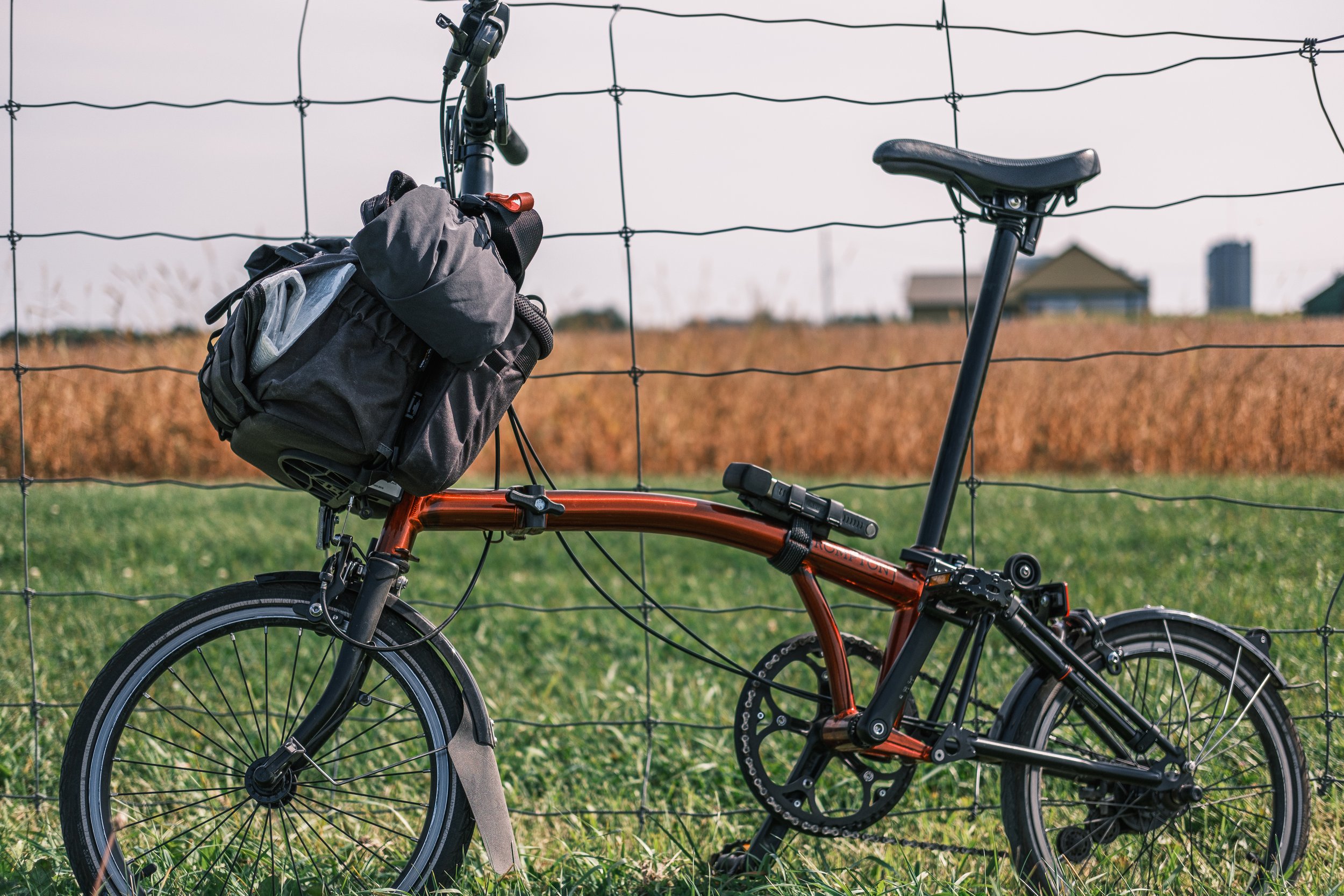
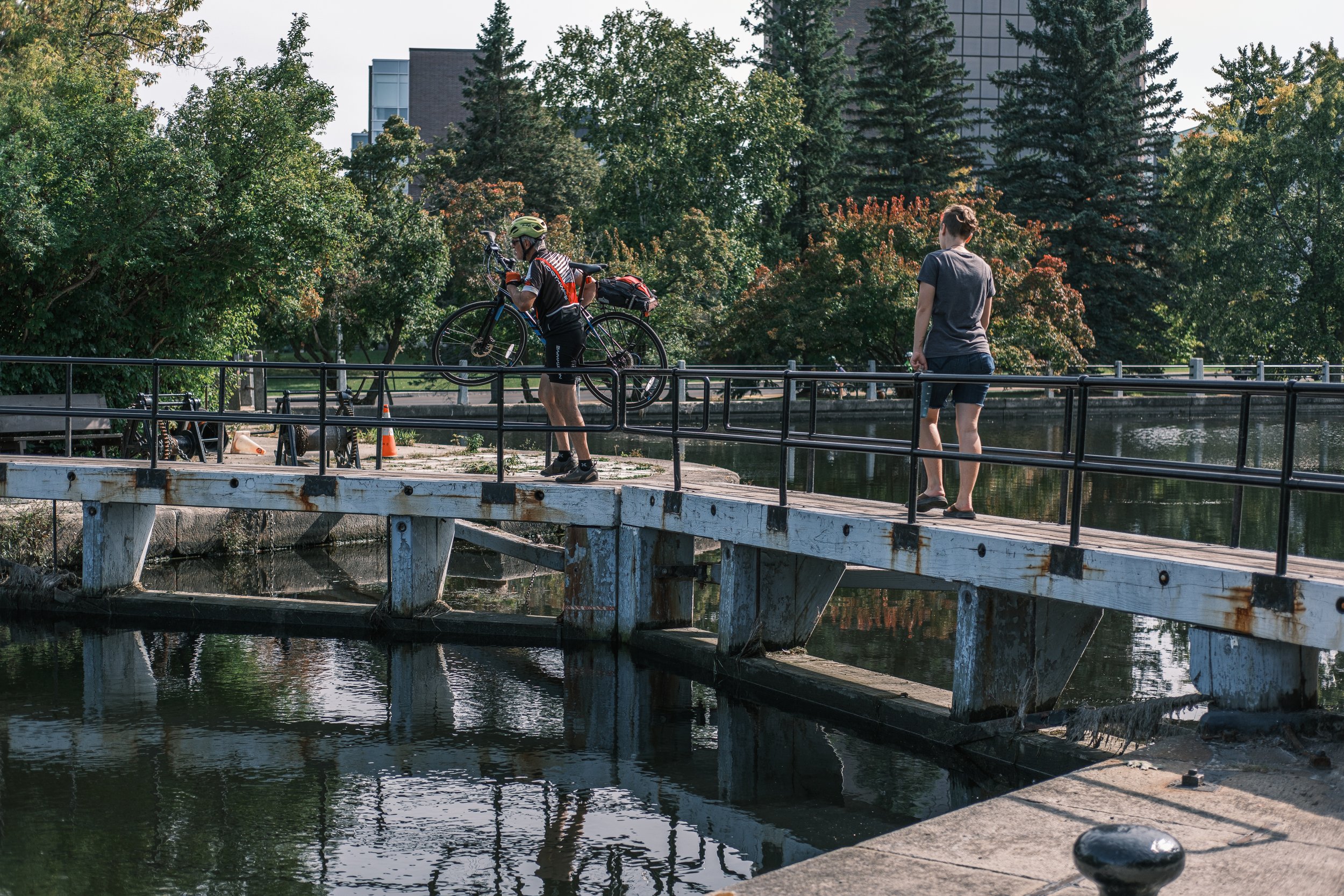
I made it back to present the Synthesis of Emerging Practice to the Road Safety Committee with 15 minutes to spare. I still needed lunch, but that would have to wait. We had our spring Active Transportation Integrated Committee meeting in the evening and building on the great response to continuous sidewalks, I started the process to form a working to explore other Dutch design elements that I wrote about in my book Fietspad. Fietspad wasn’t just to document my travels, it was a starting point to change things in Canada. We have a good working group of interested professionals from across the country and will soon begin the process of at least discussing these elements and how they might fit in a Canadian context.
The next day I would head to Montreal on the train to check out the good work they’ve been doing, but more on that in a separate blog post. During my time in Ottawa, I was pleasantly surprised by the extent of bicycle infrastructure. ok, it’s not Amsterdam, but it was better than I expected. Having the bike with me allowed me to explore far more of the City than I had been able to on my many previous trips for TAC meetings. Below are a few photos grouped into various categories of things I came across, and in some cases searched out.
Residential Woonerf’s
I wrote a recent blog post on residential woonerfs, or real woonerfs as I called them after my most recent trip to the Netherlands, and this is one of the few examples that I’m aware of in North America that uses the main techniques of narrowing the roadway to one lane and adding lateral shifts. We should do more!
This one is an odd little configuration, located in the middle of a block. If I had to guess, the residents had a hand in its design as it would be odd to put so much infrastructure in front of just a few homes. It’s a combination of quick build elements and some more permanent features, and is one way for vehicles, albeit there’s no except bicycles sign in this direction either…
Maybe the closest thing we have to a real woonerf in North America
I didn’t take much video on this trip, but I did ride through this in both directions with the phone filming…
Active Modes Bridges
The City has been working hard to make active transportation easier than driving with several active modes only bridges across canals, that help to make walking, biking and rolling more competitive with the car. These vary in design and width, but all provide a more direct route for some trips than taking the car, depending on where your trip starts and finishes of course.
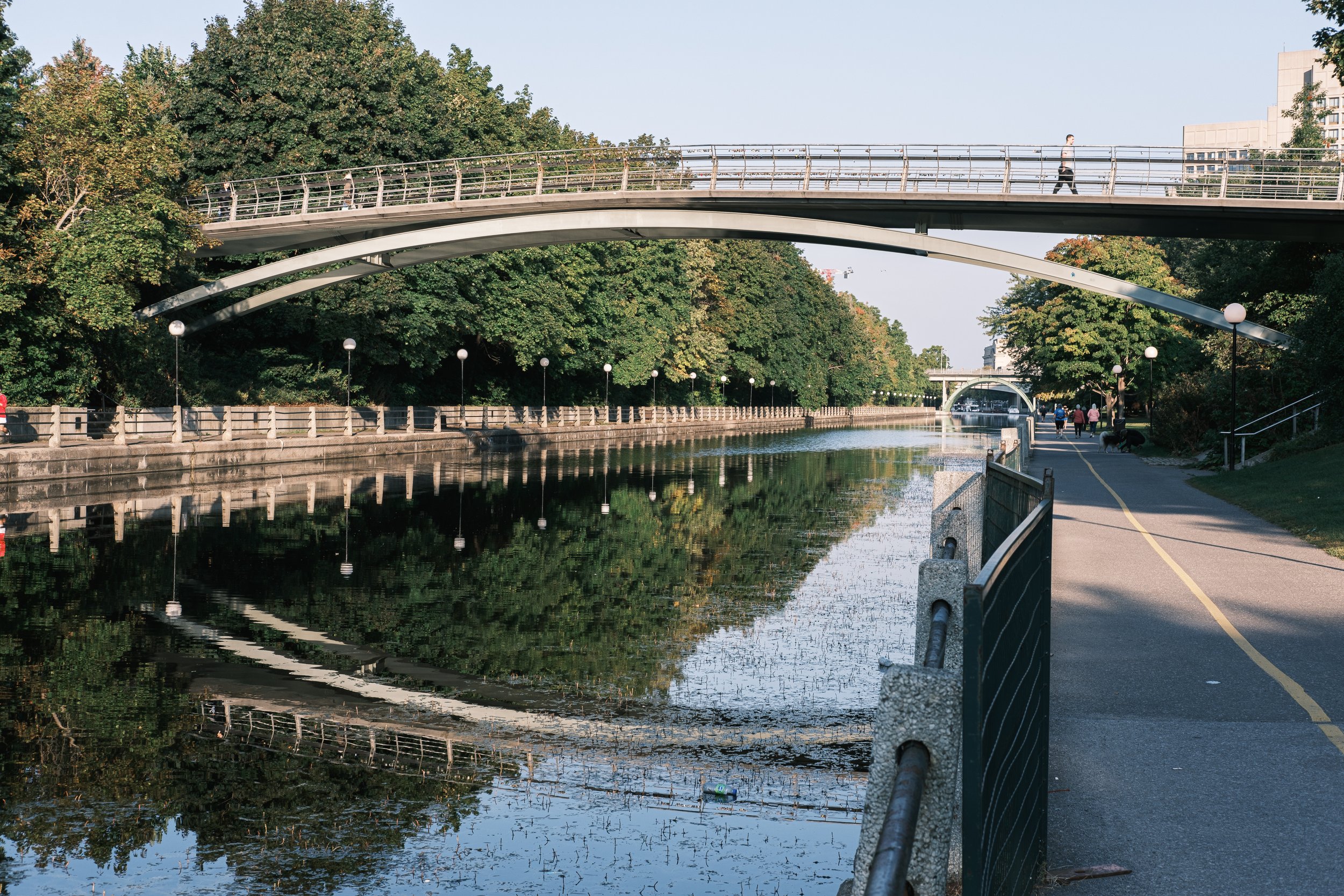
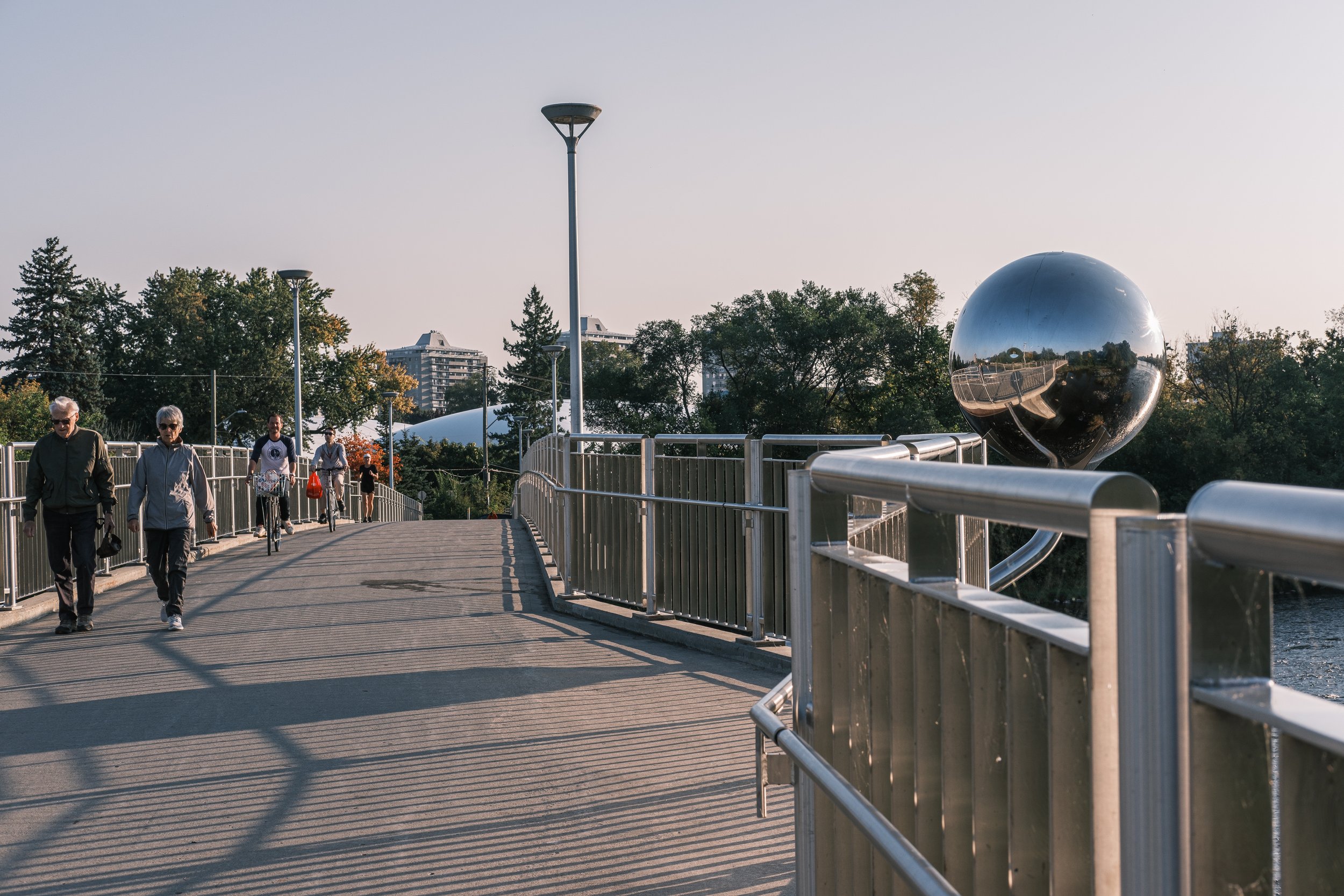
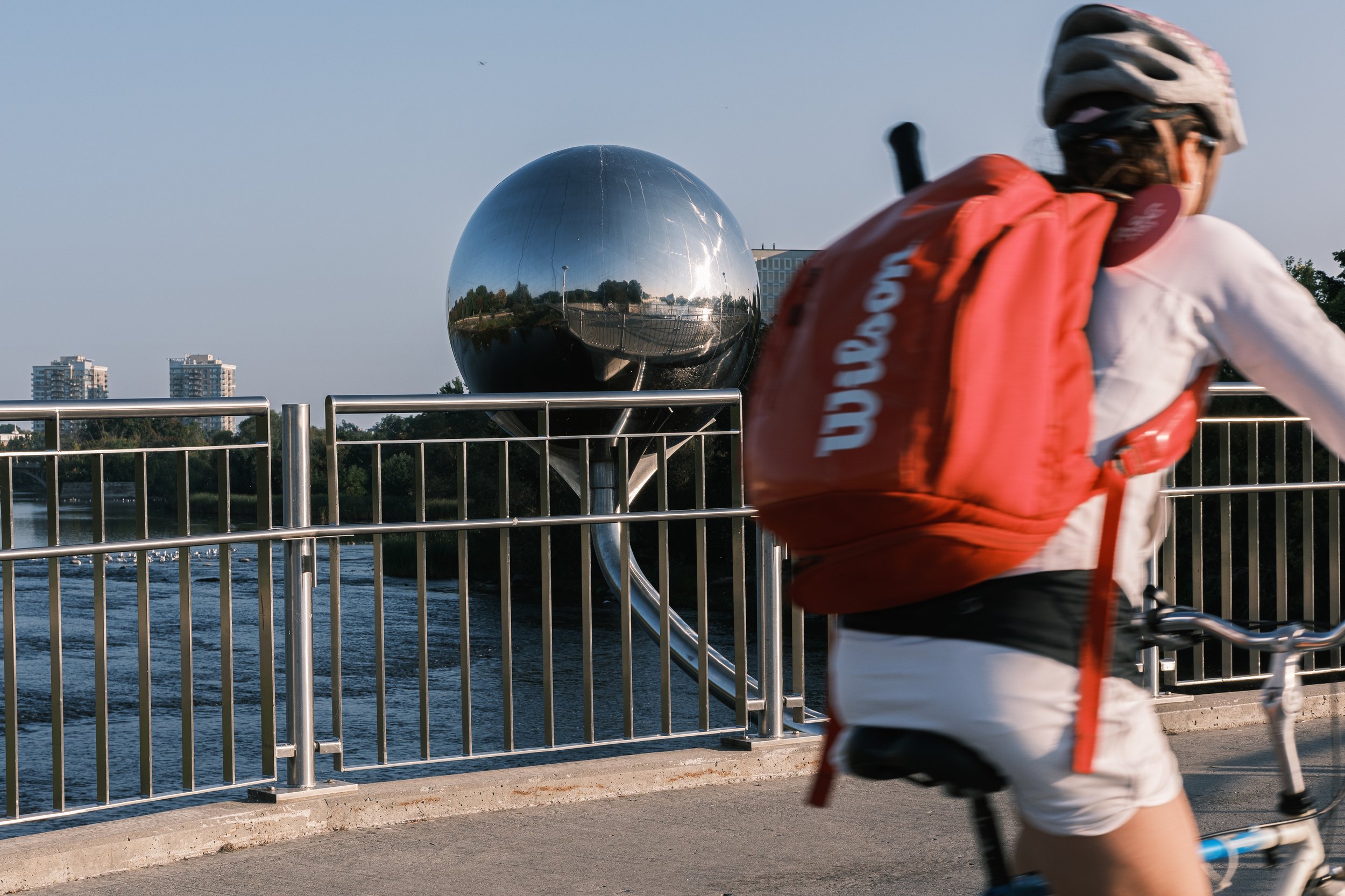
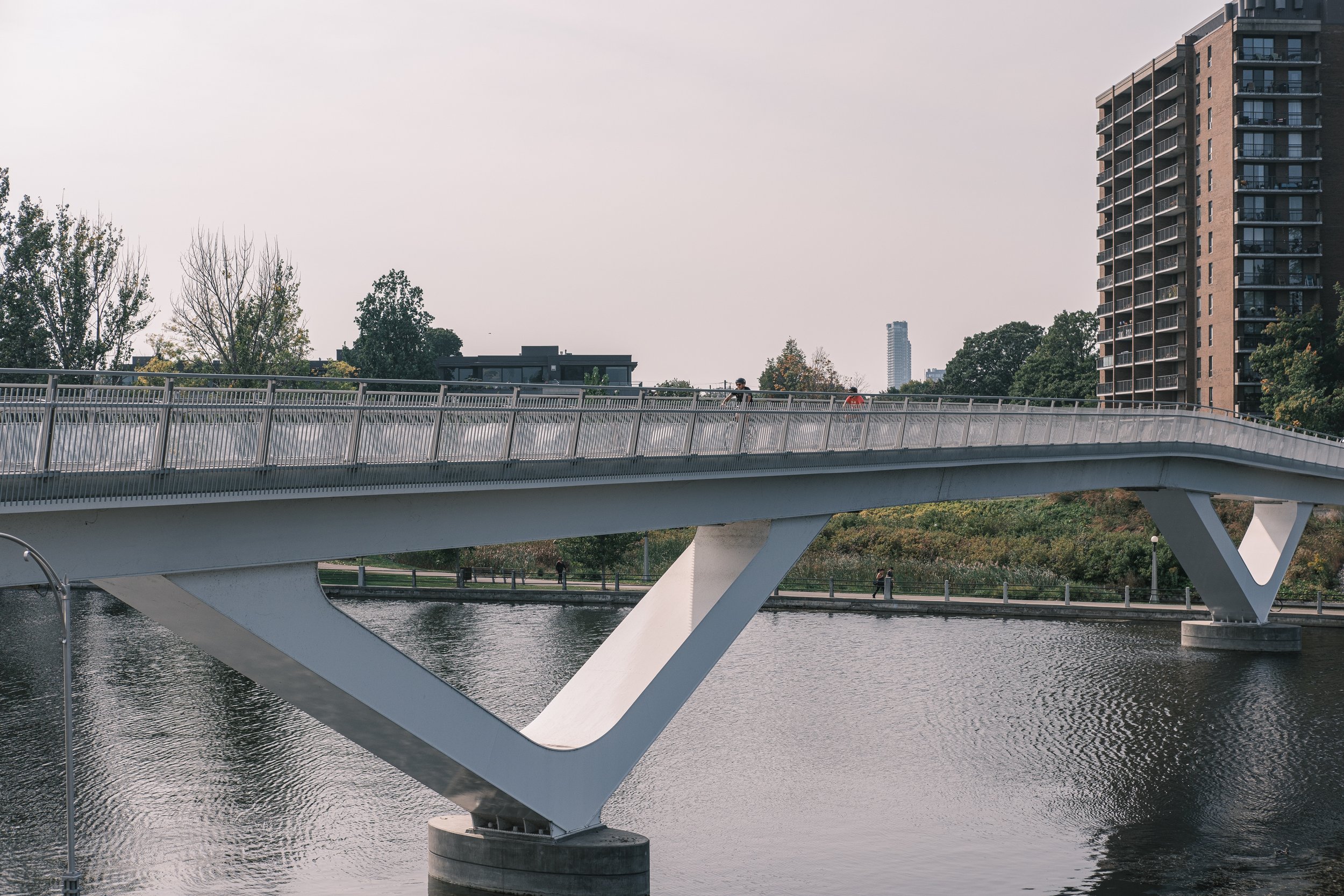

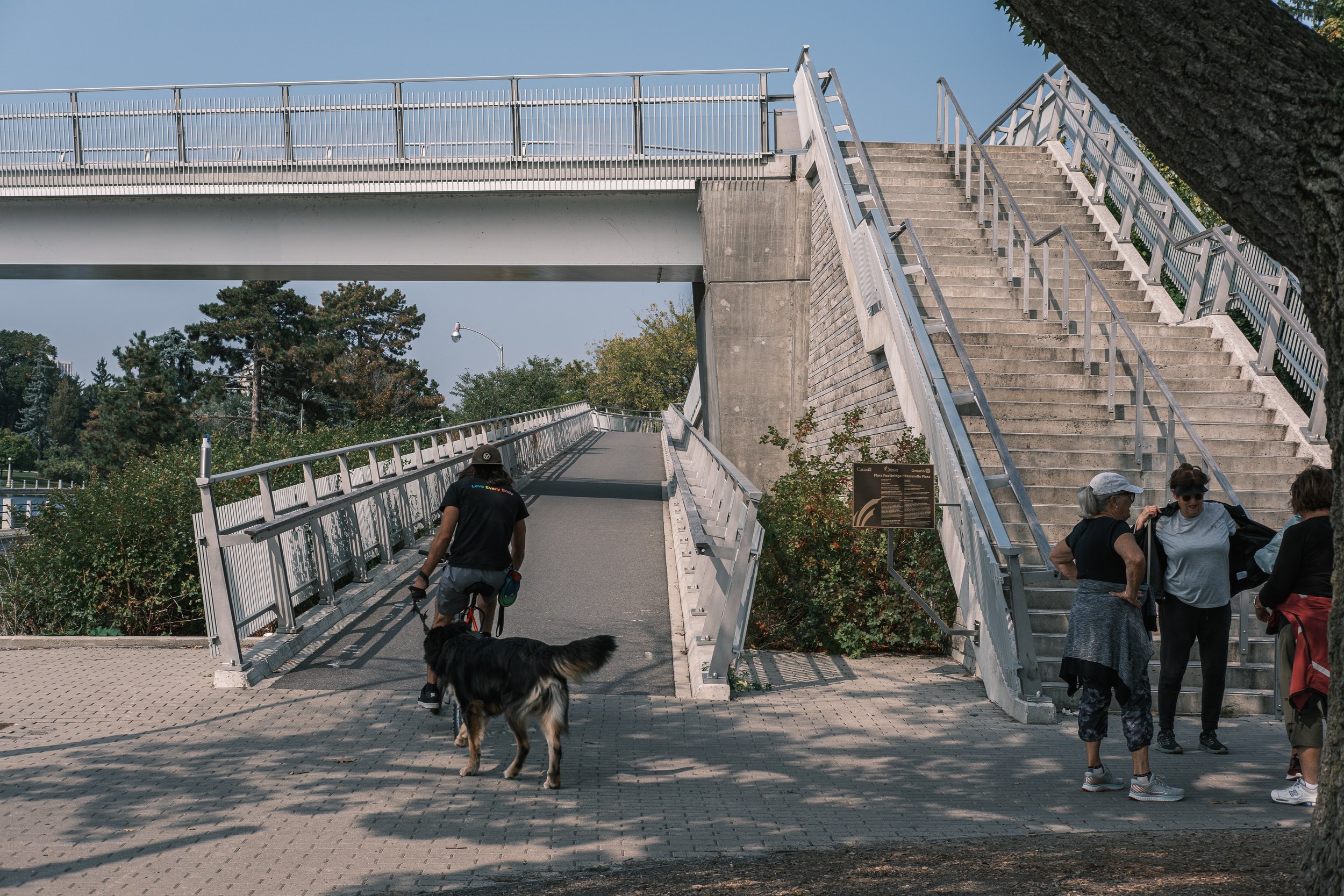

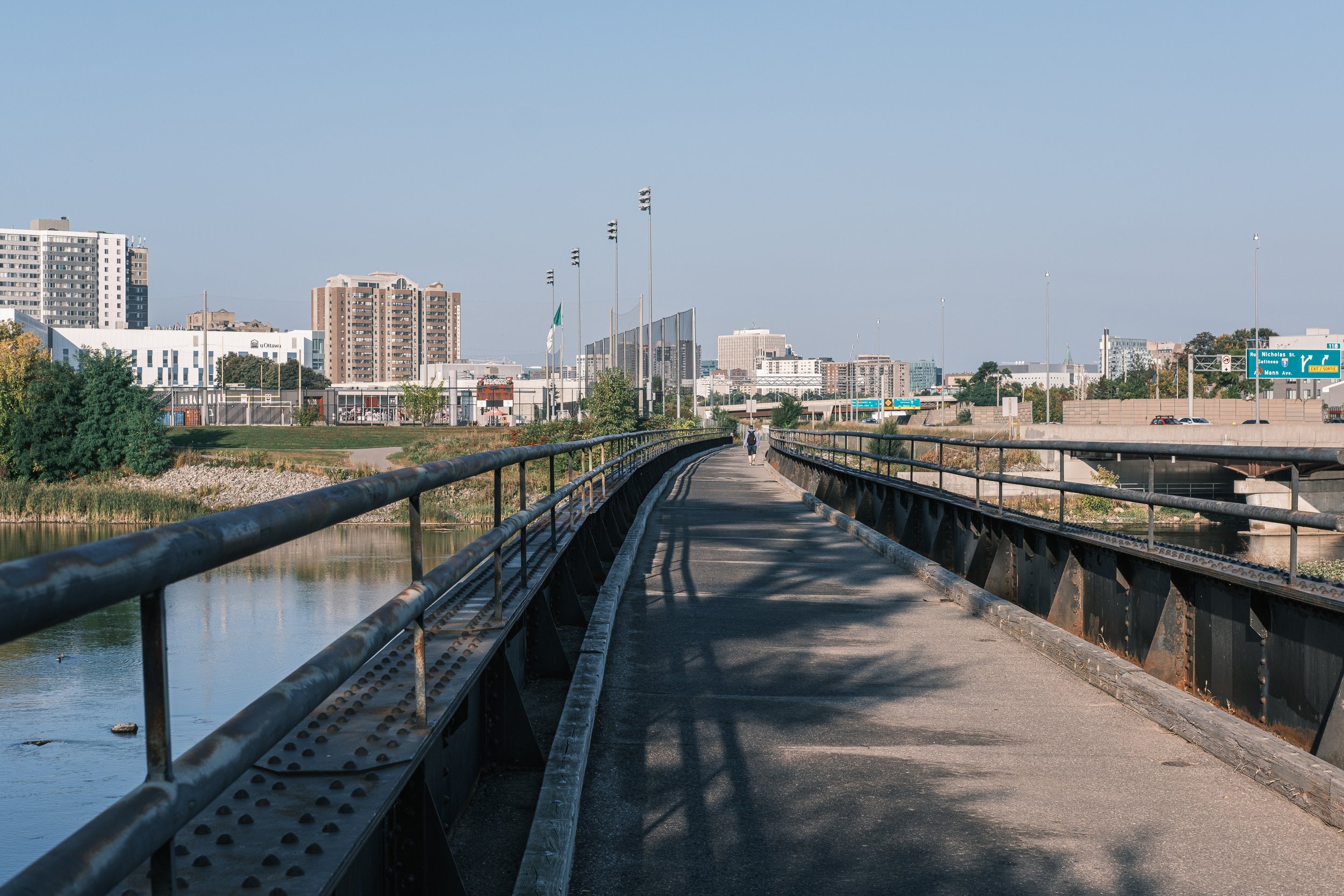
Protected Bike Lanes
the City features quite a variety of protected bike lanes, both bi-directional and uni-directional, on the street and behind the curb, with and without buffer space. At intersections, bike signals are used frequently, possibly exclusively, but I did see some locations where separate right turn lanes would allow turning traffic to be separated from through bike movements and it wasn’t. On the whole, the bike network is really expanding, and while not close to Dutch levels yet, it’s better than many places.
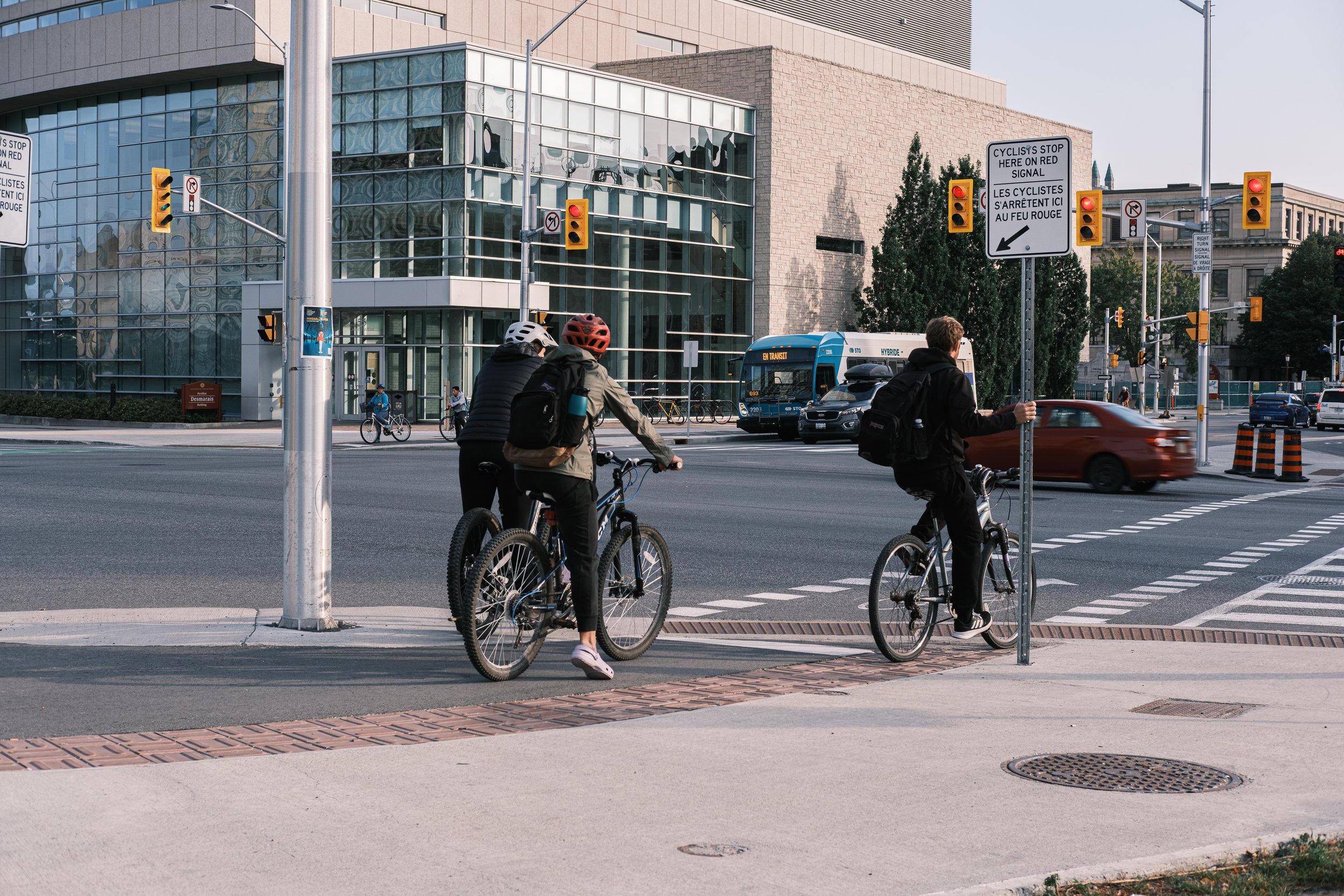
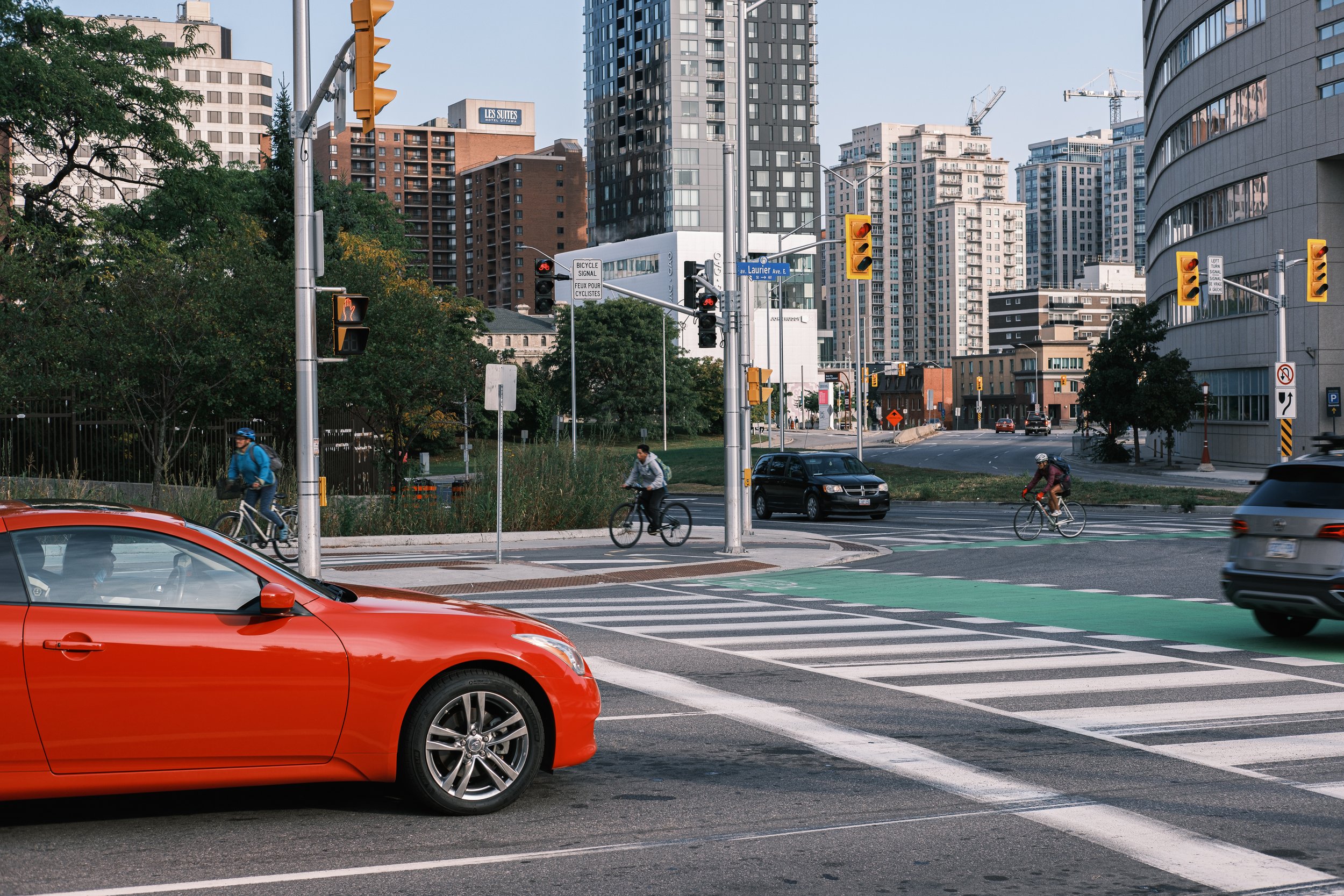
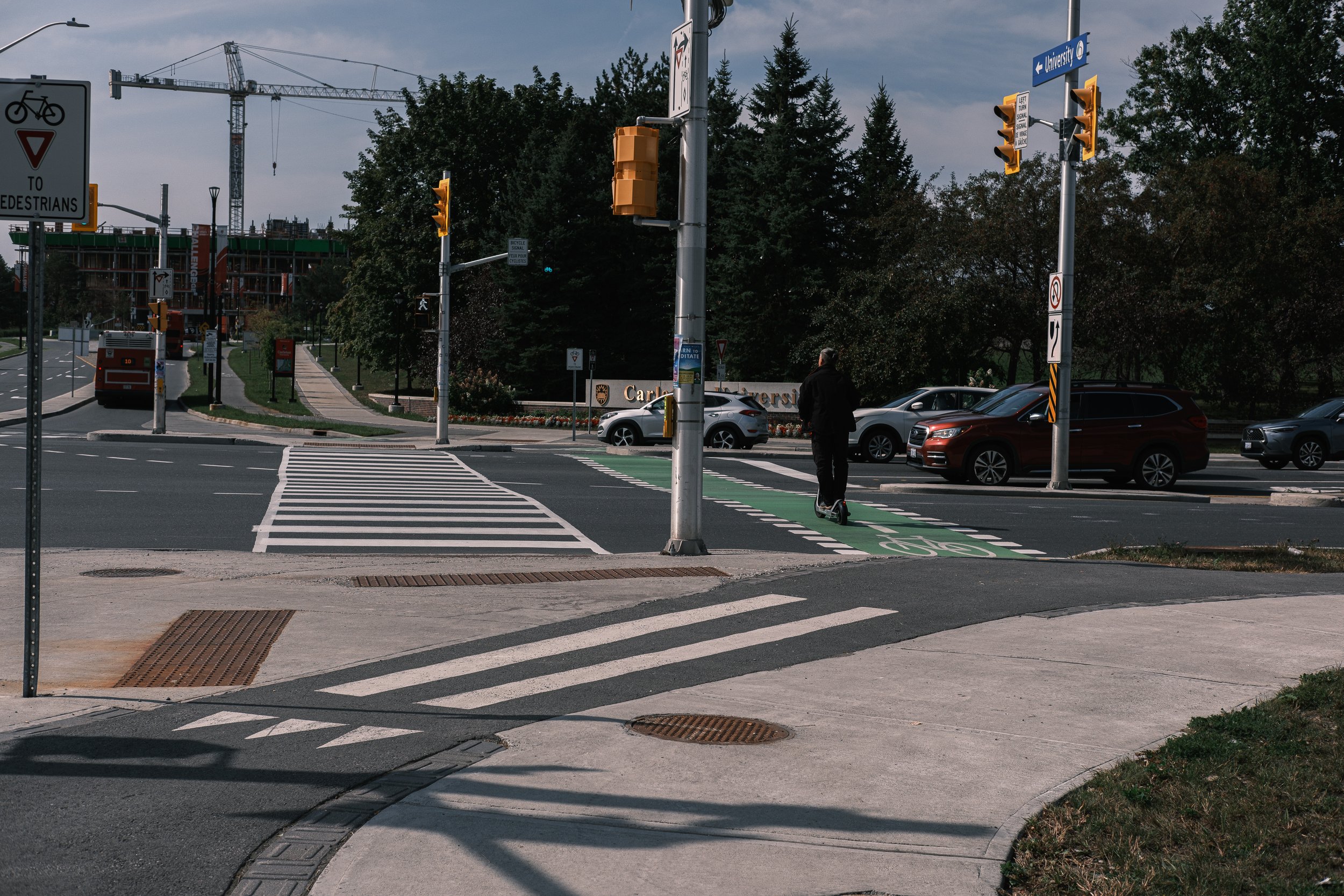
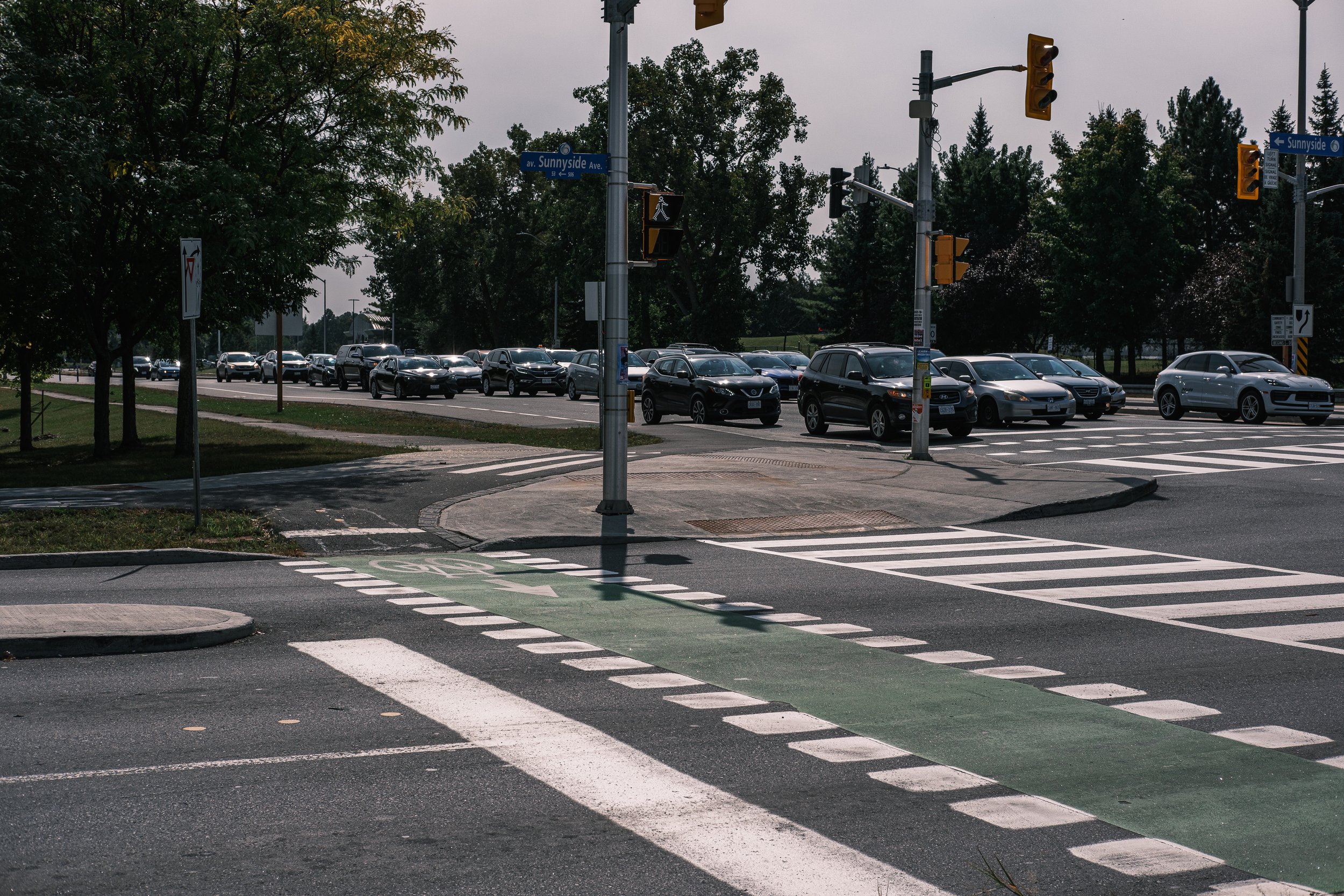
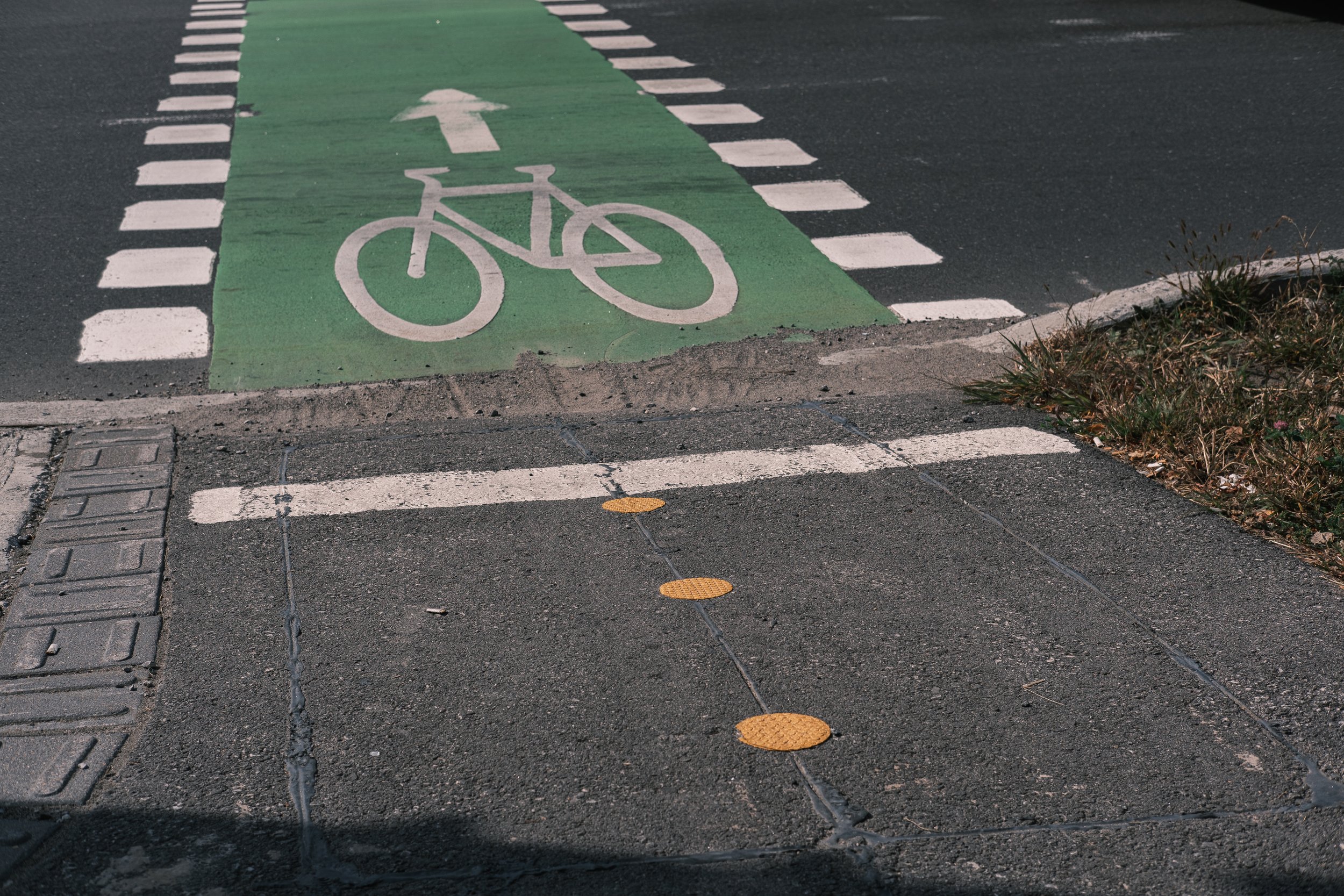
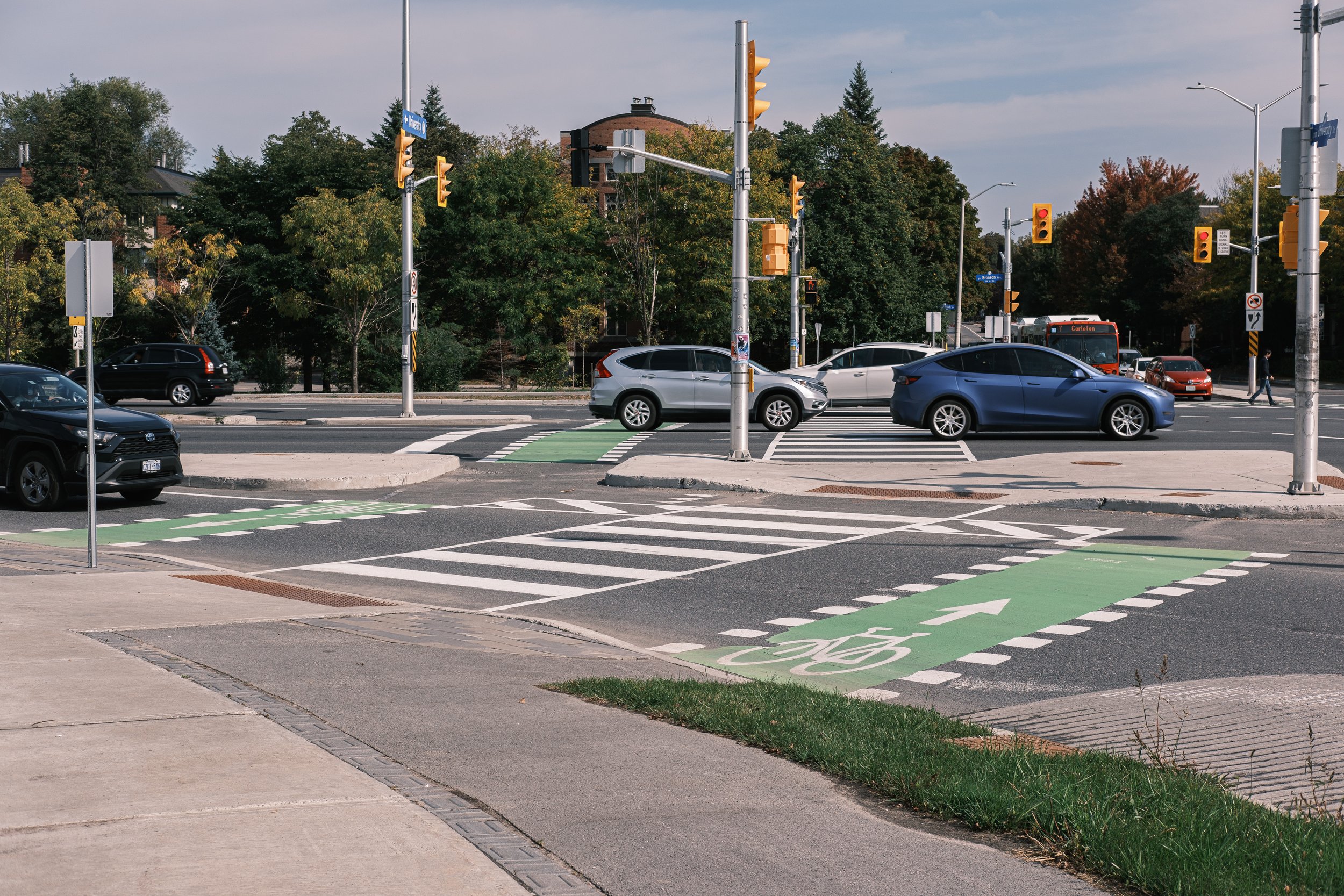
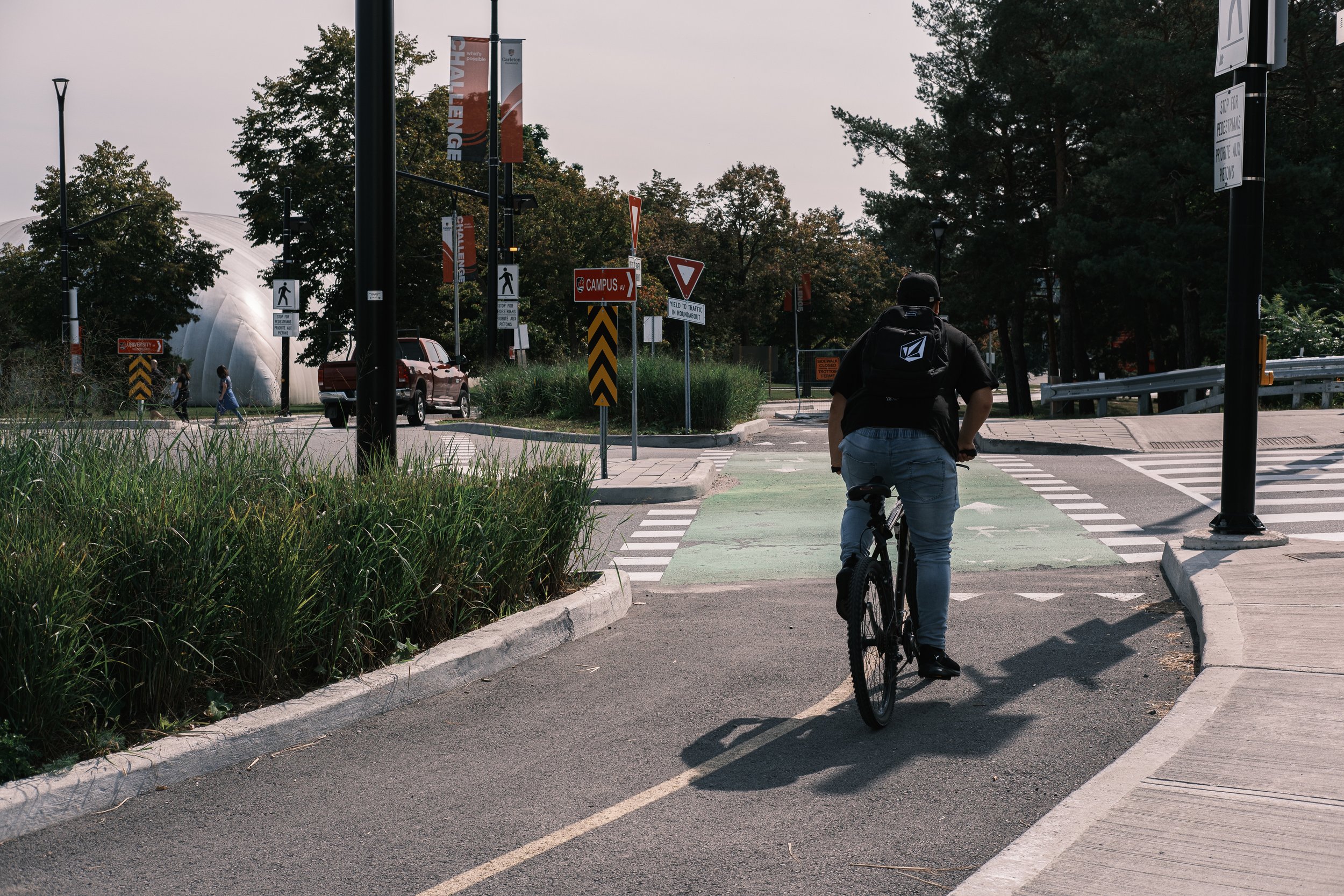
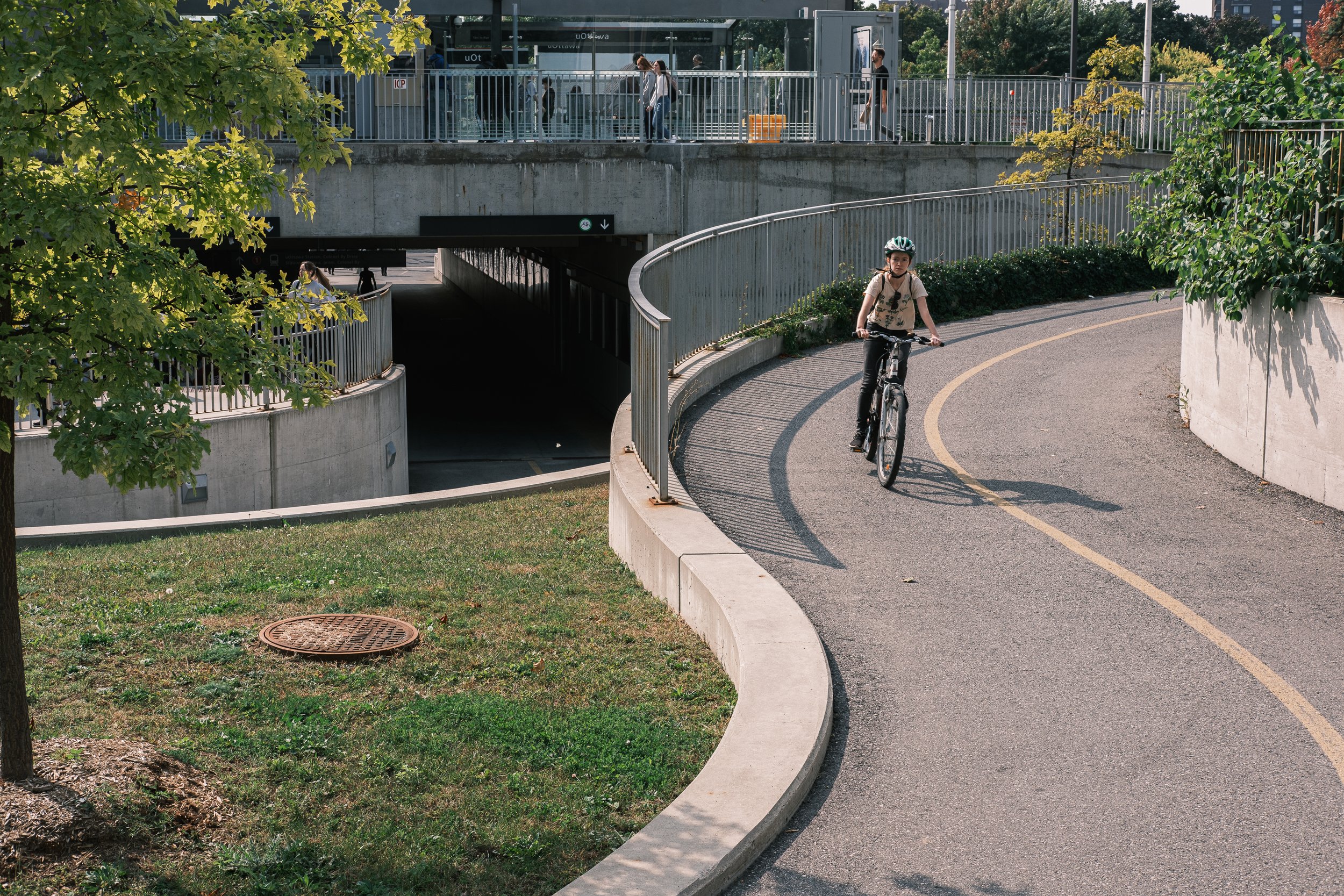
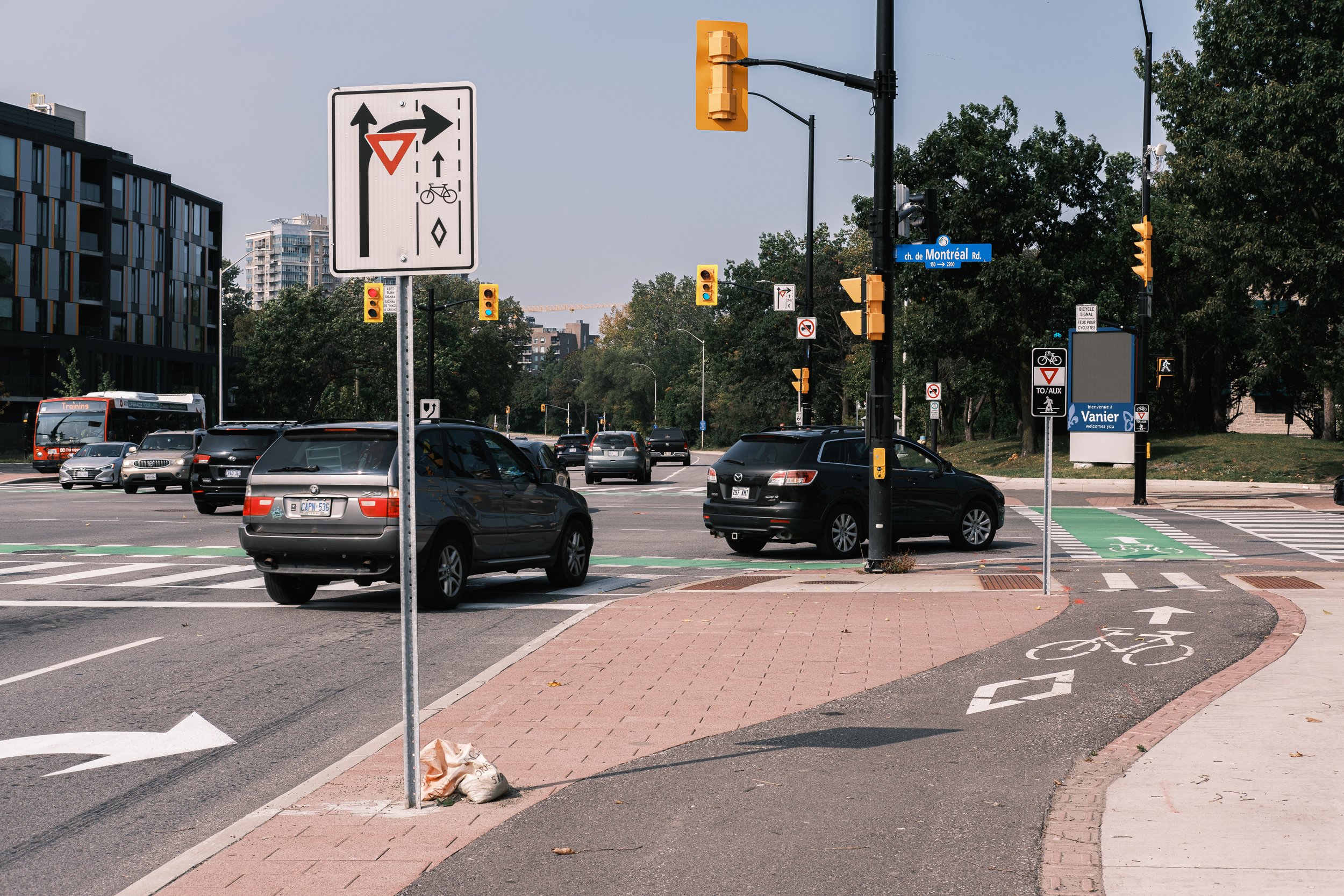
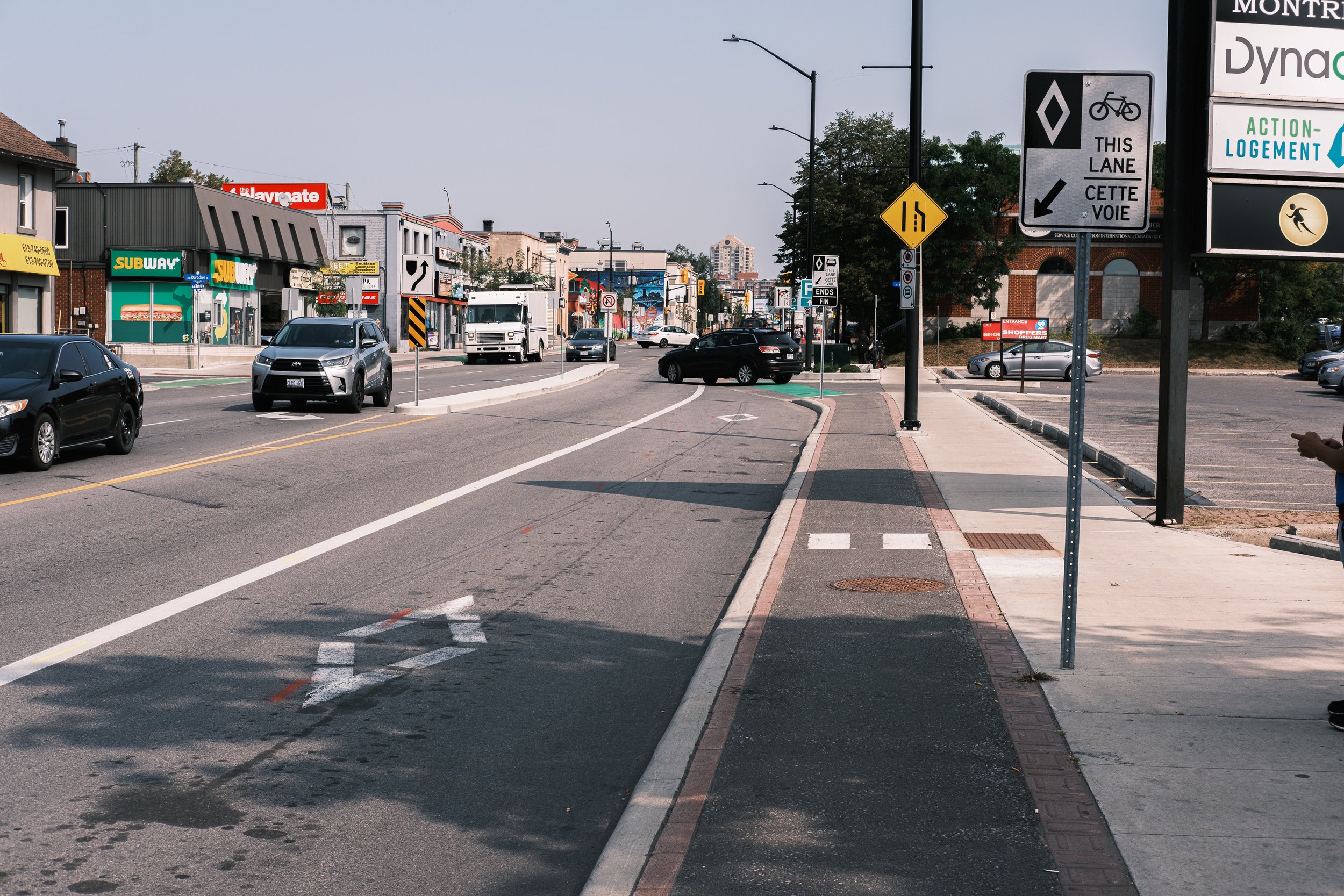
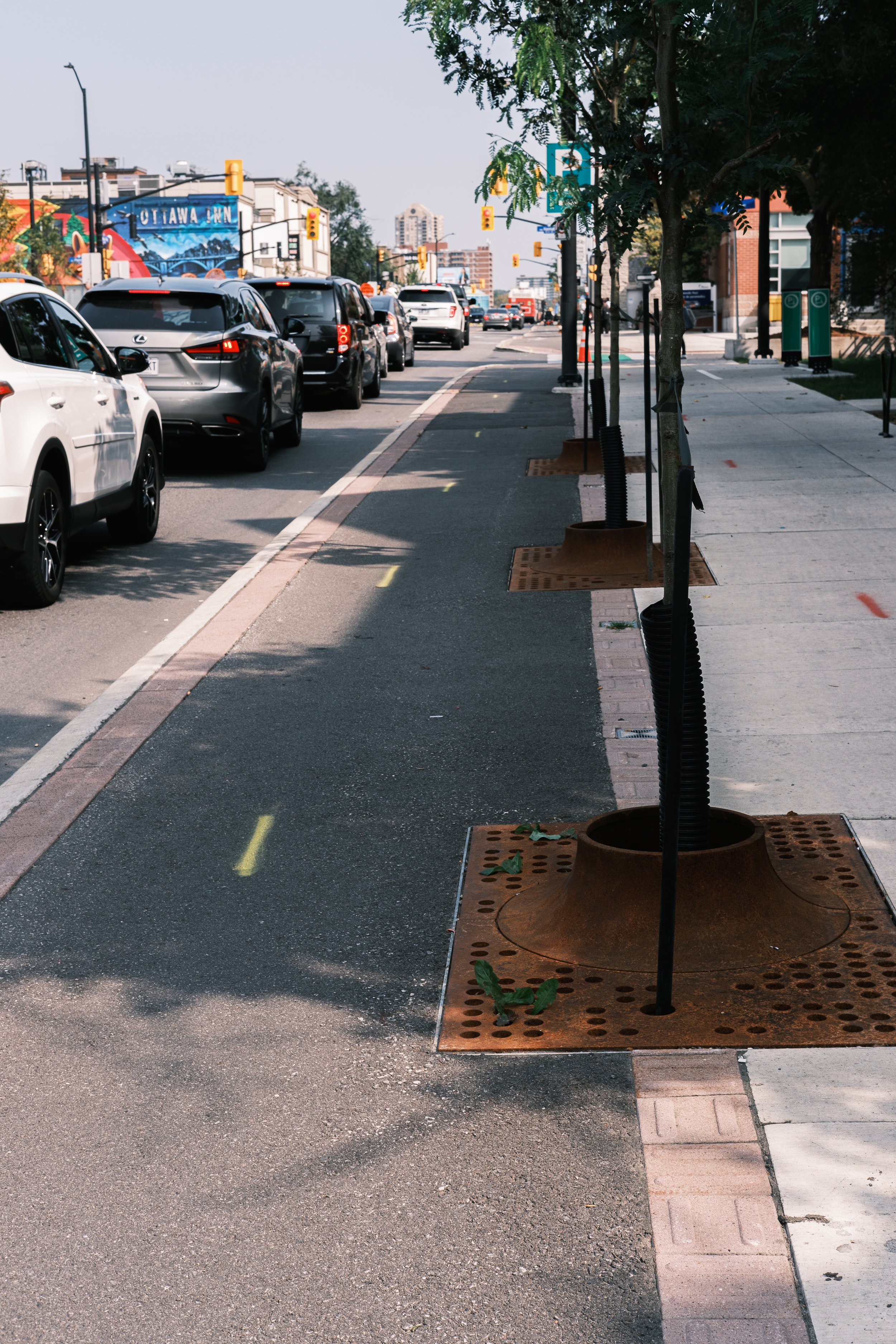

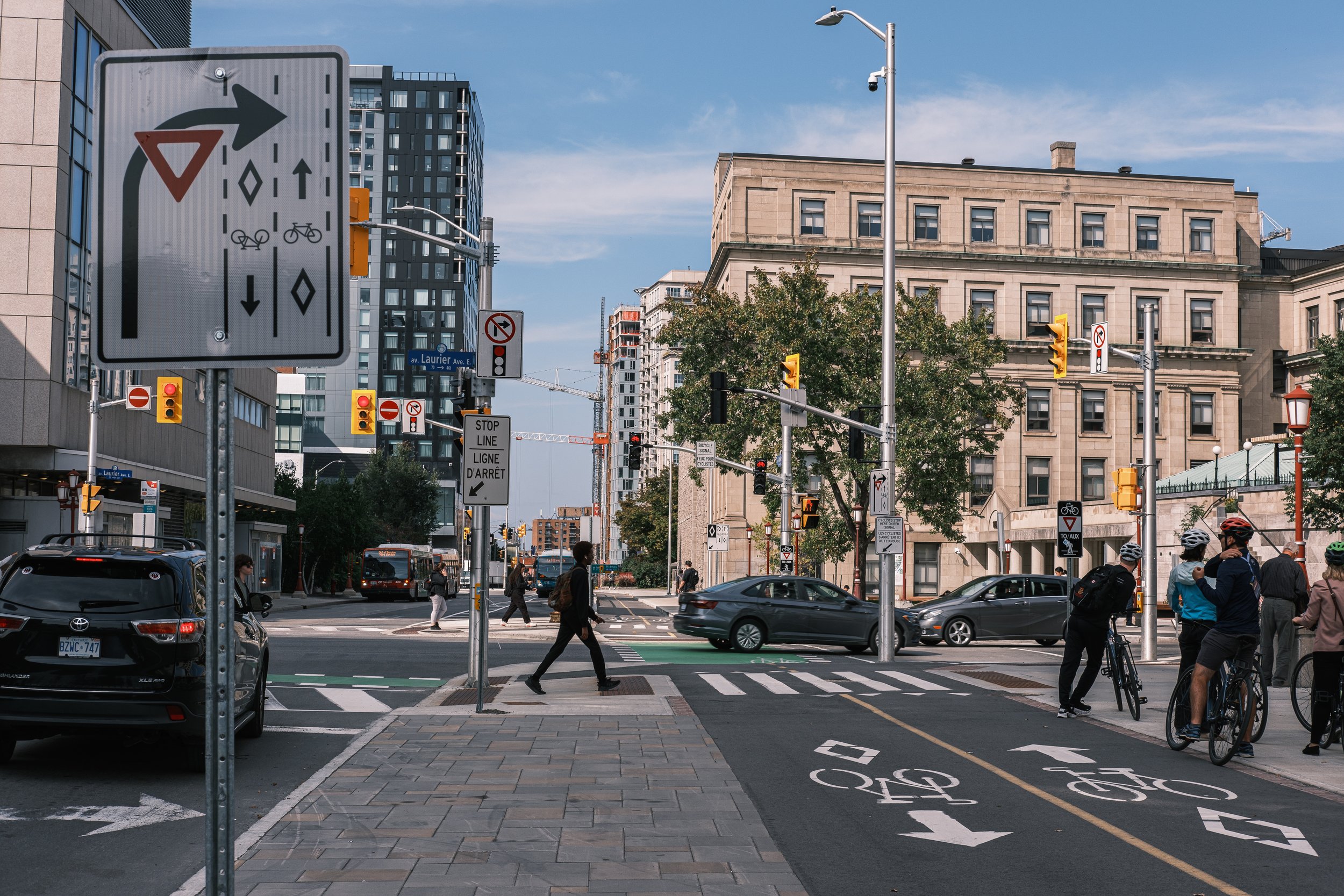
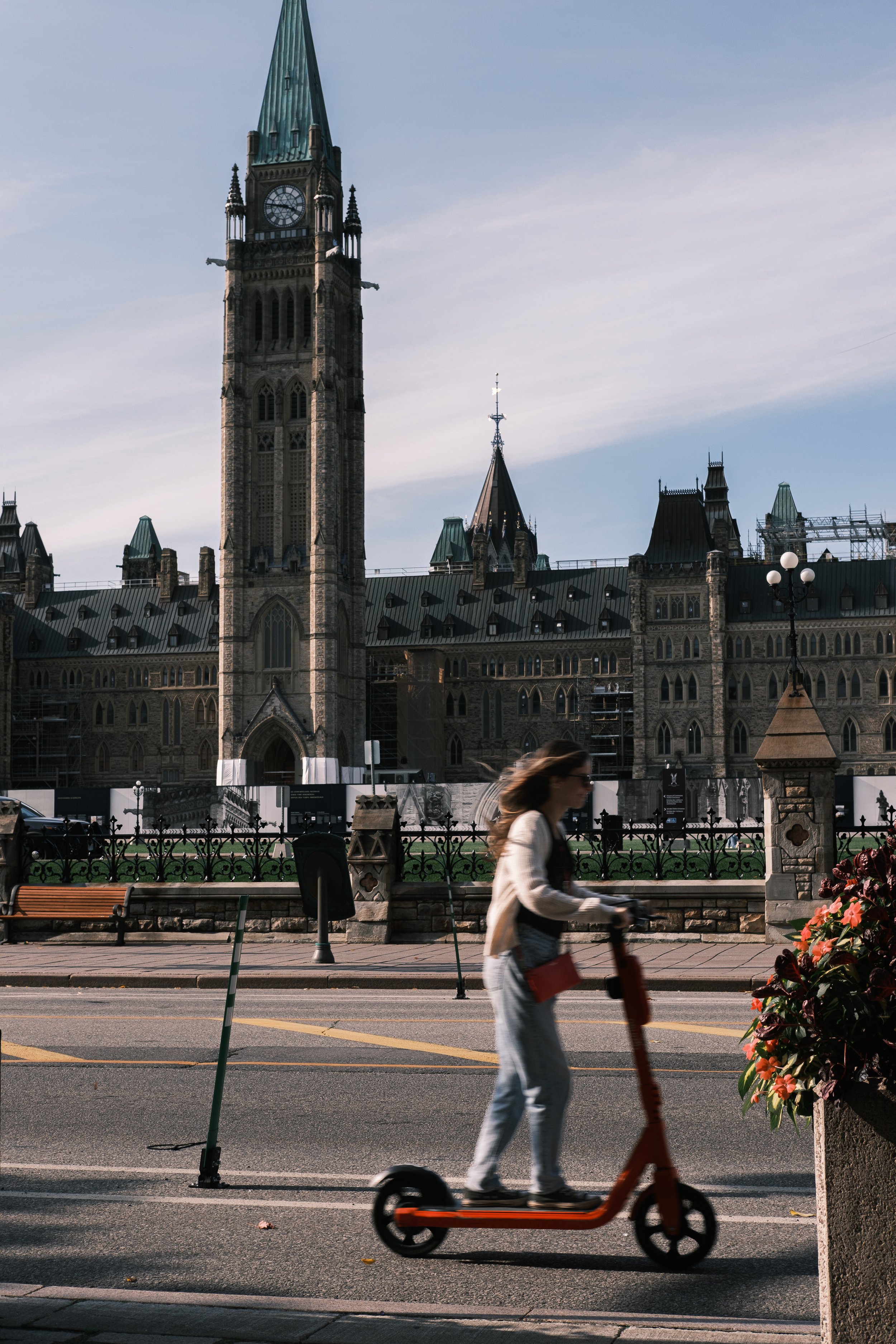
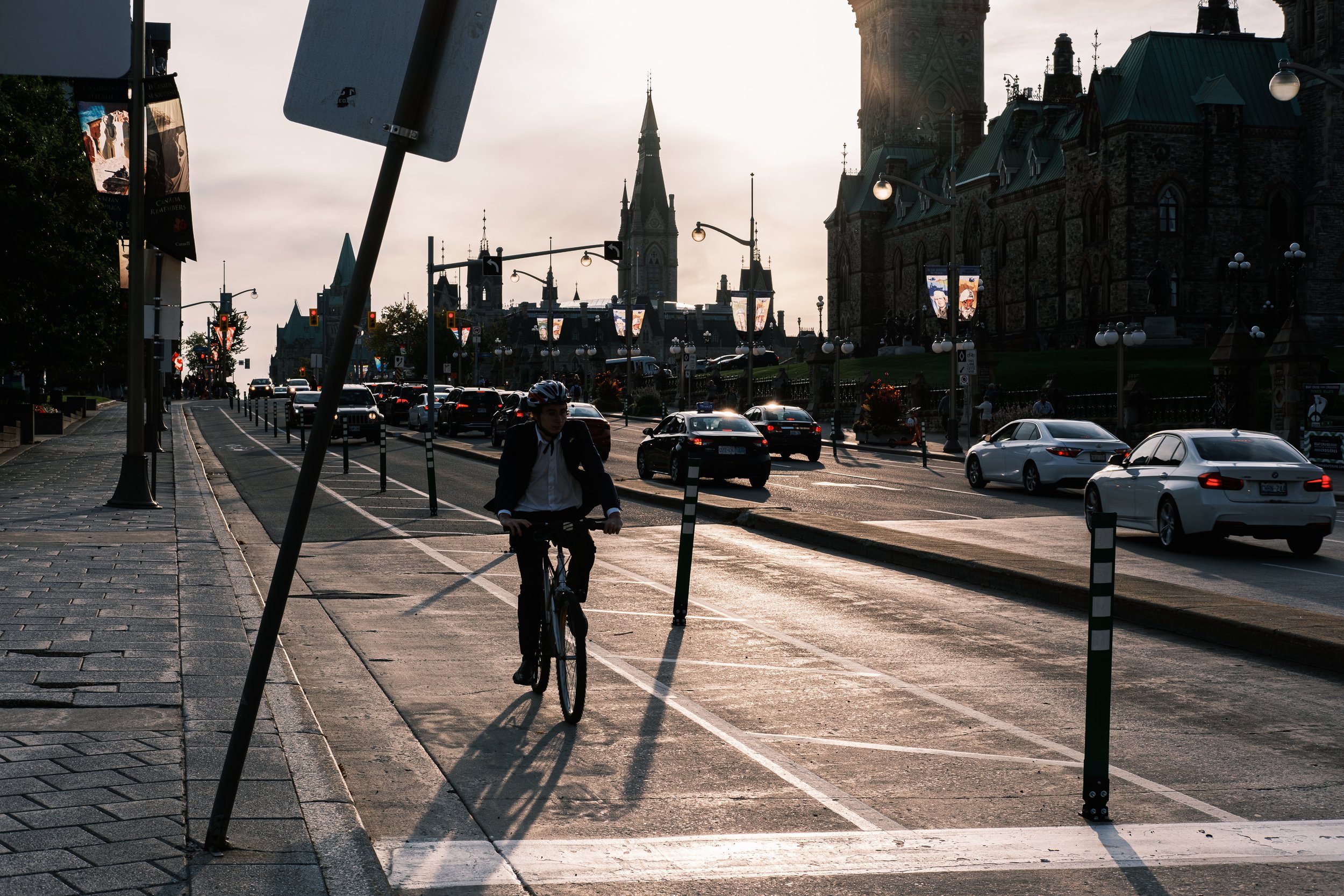
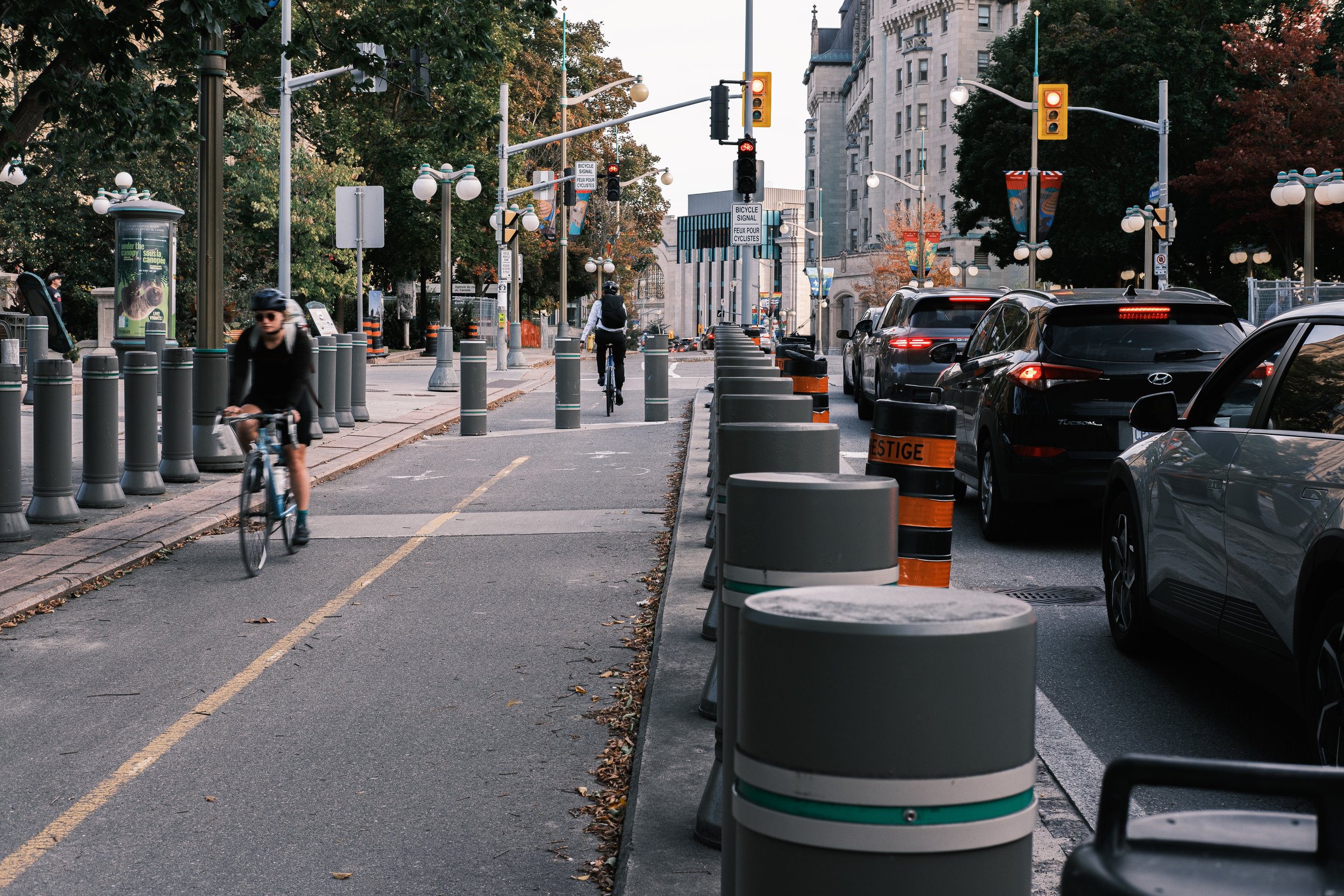
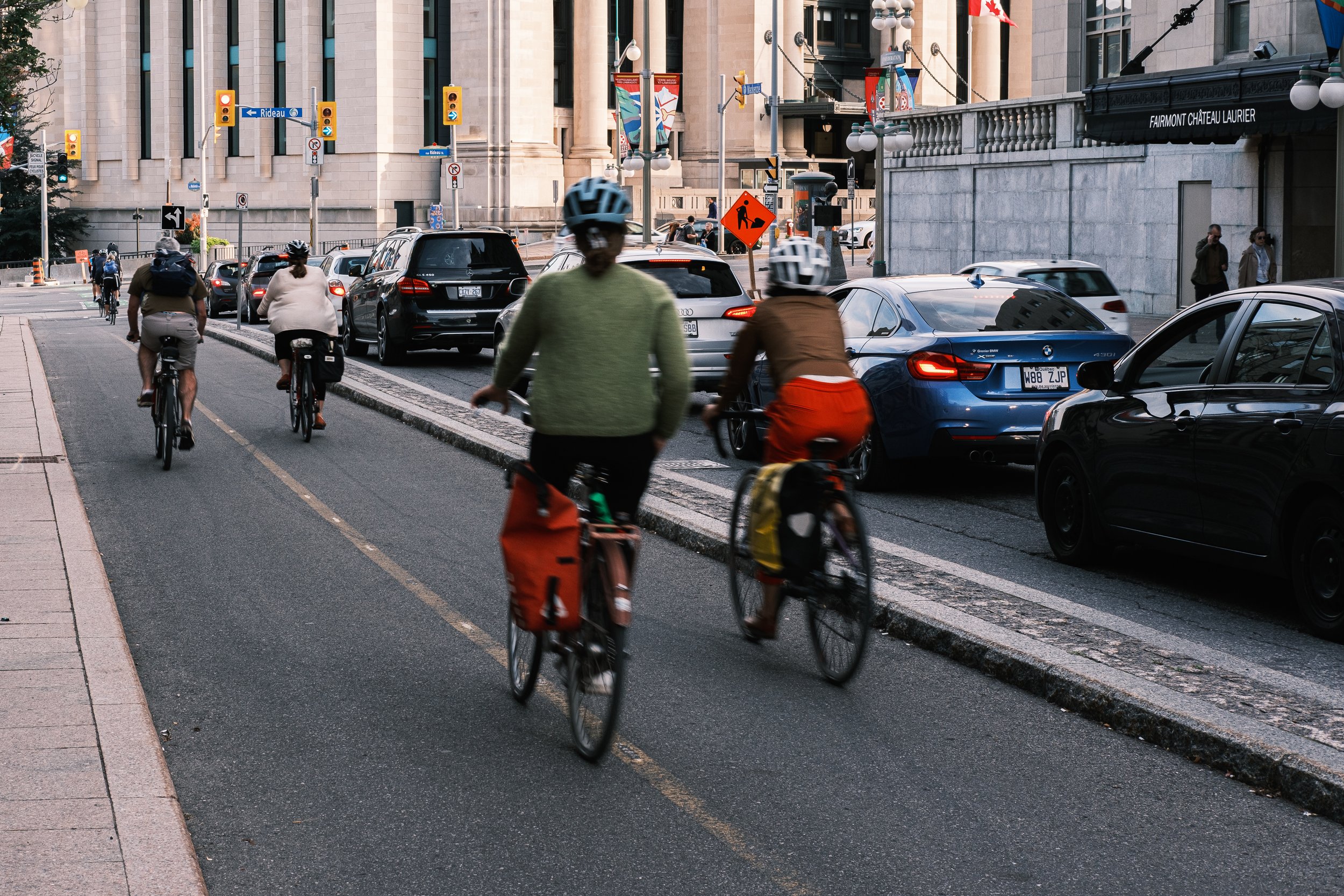
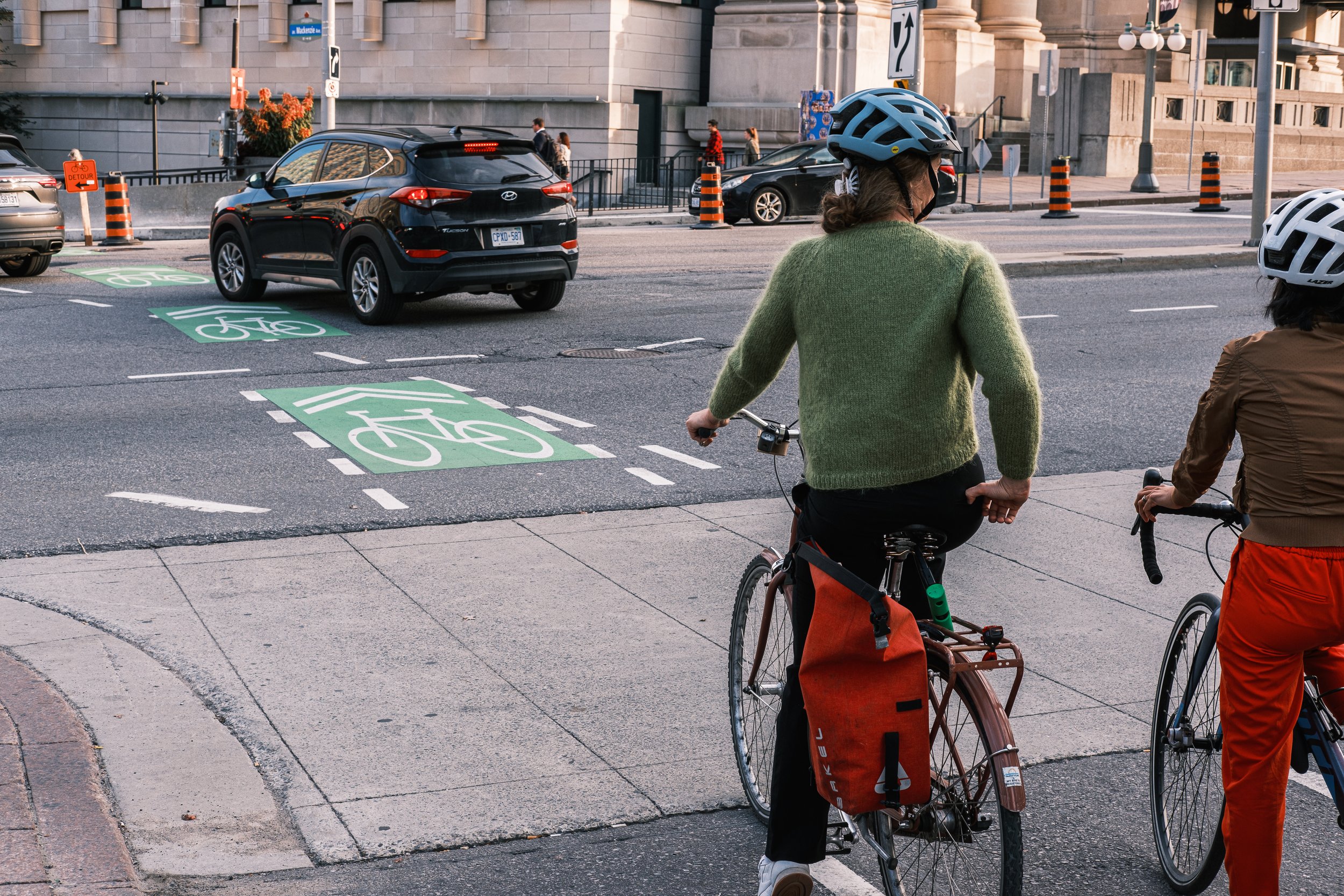
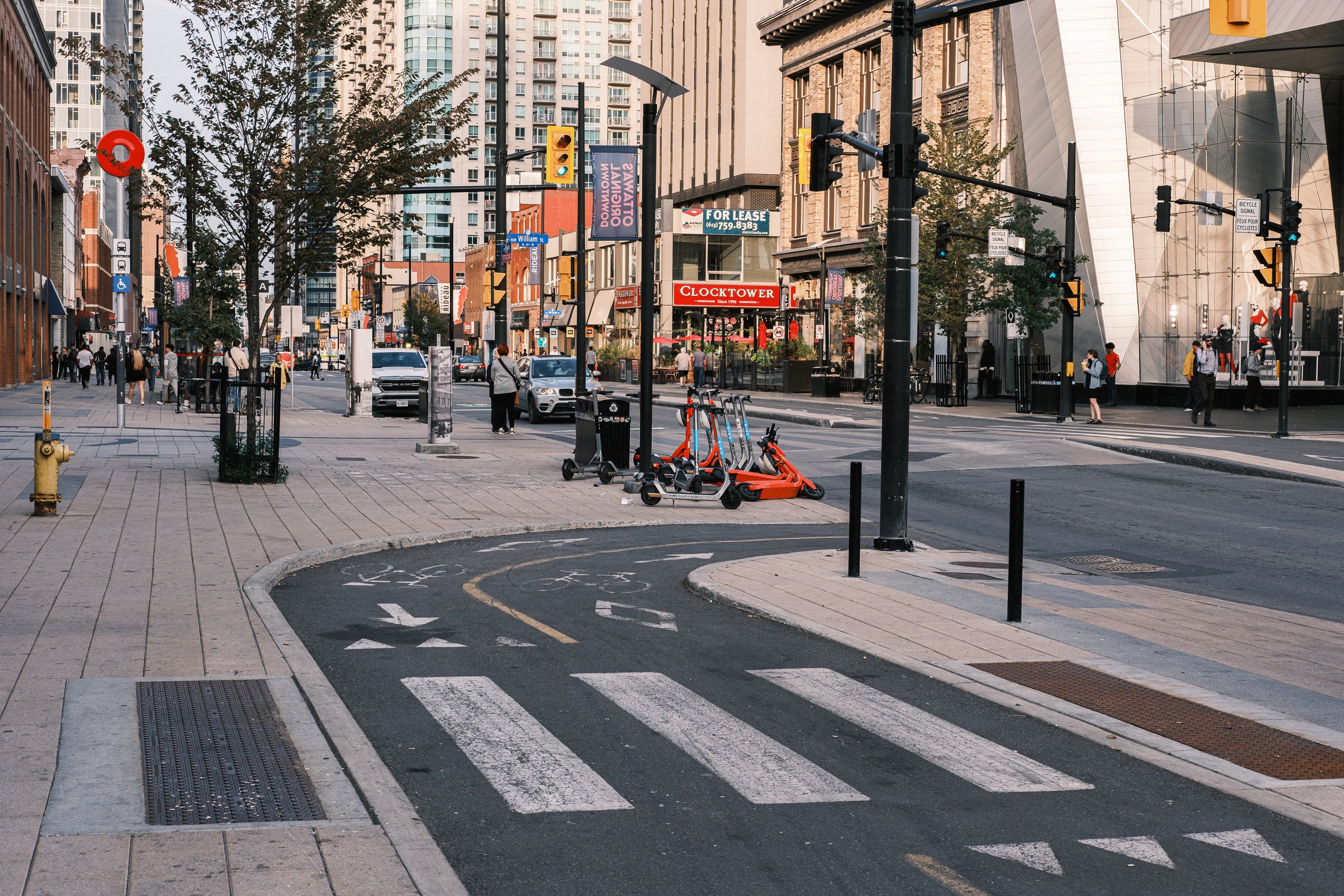
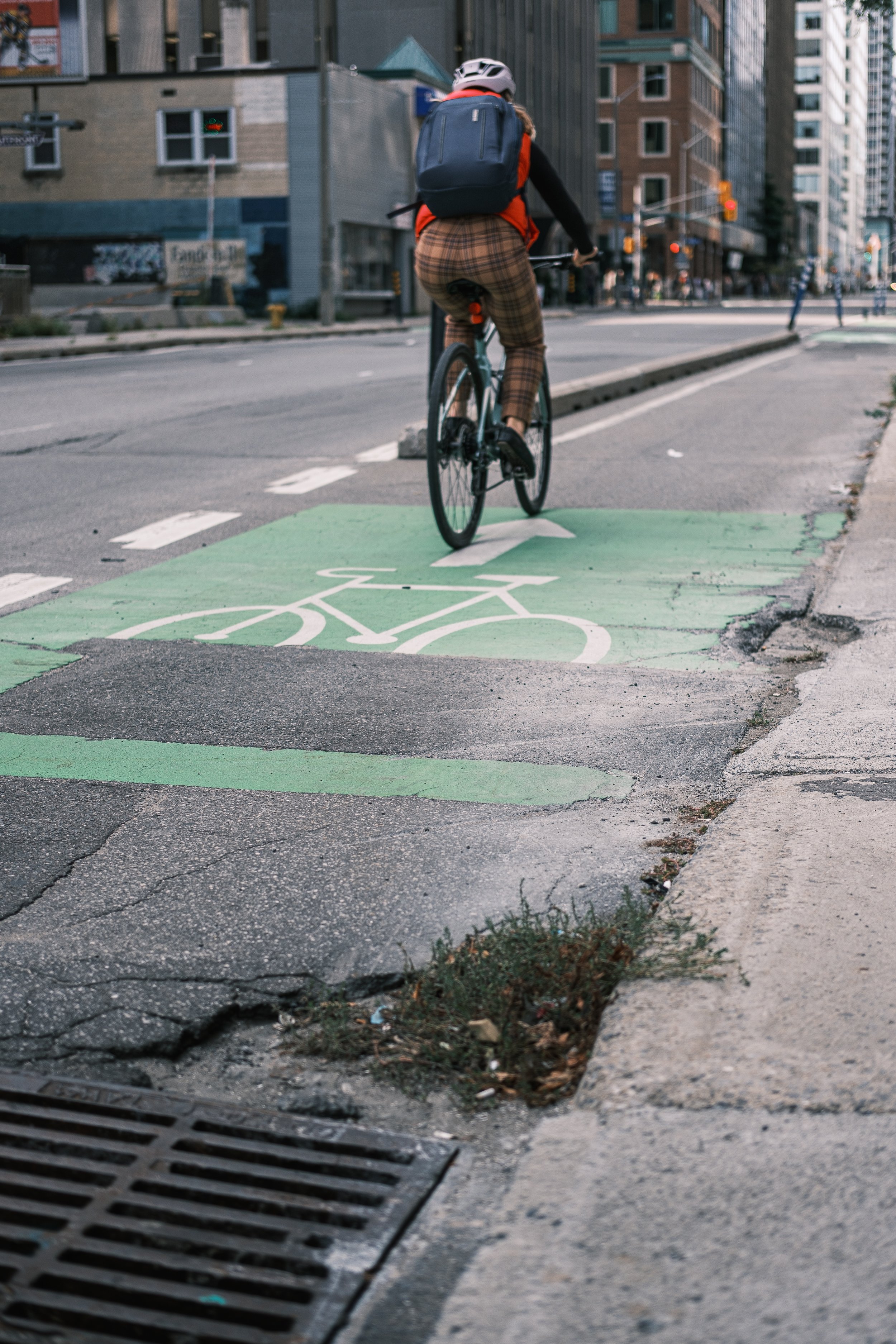
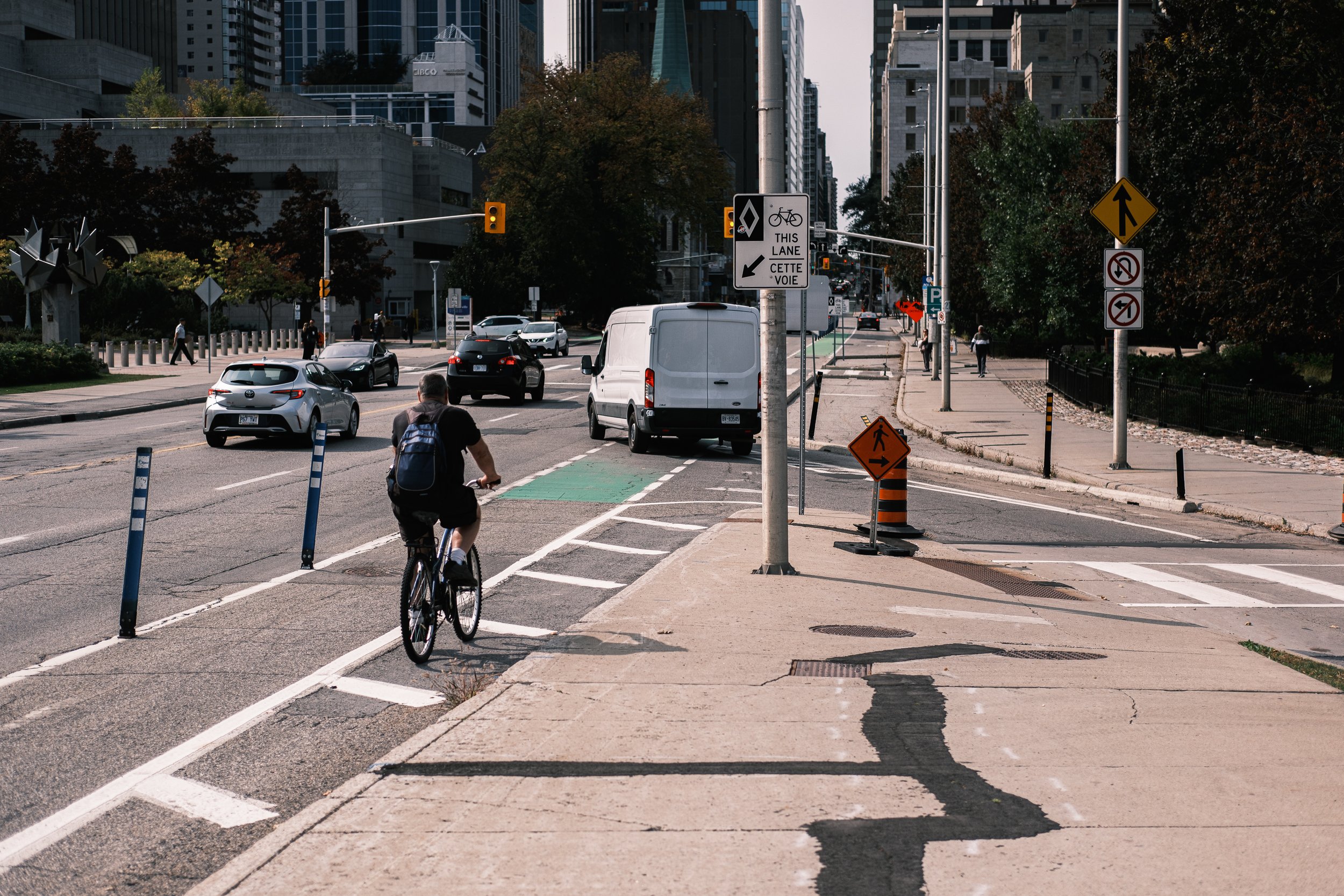
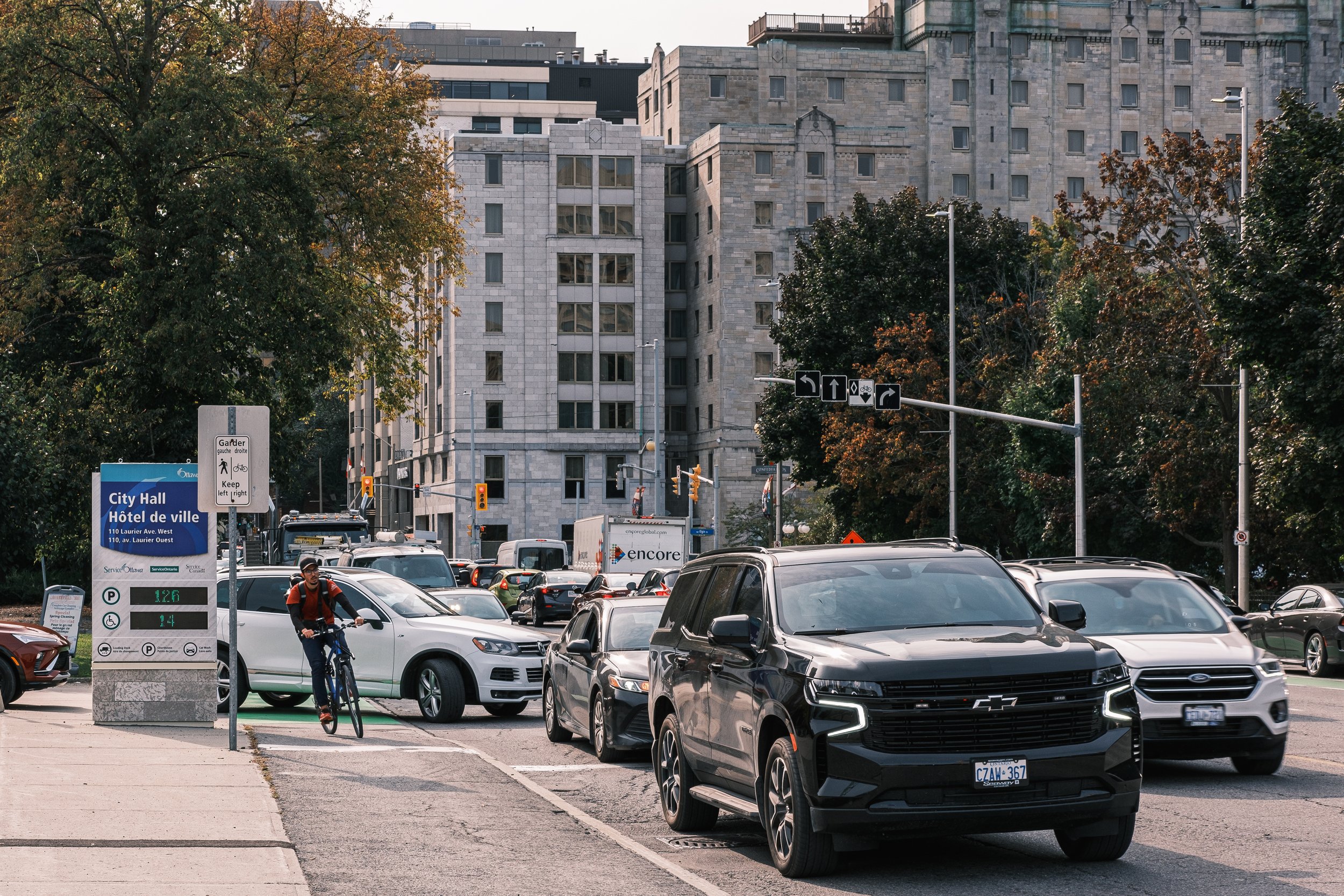
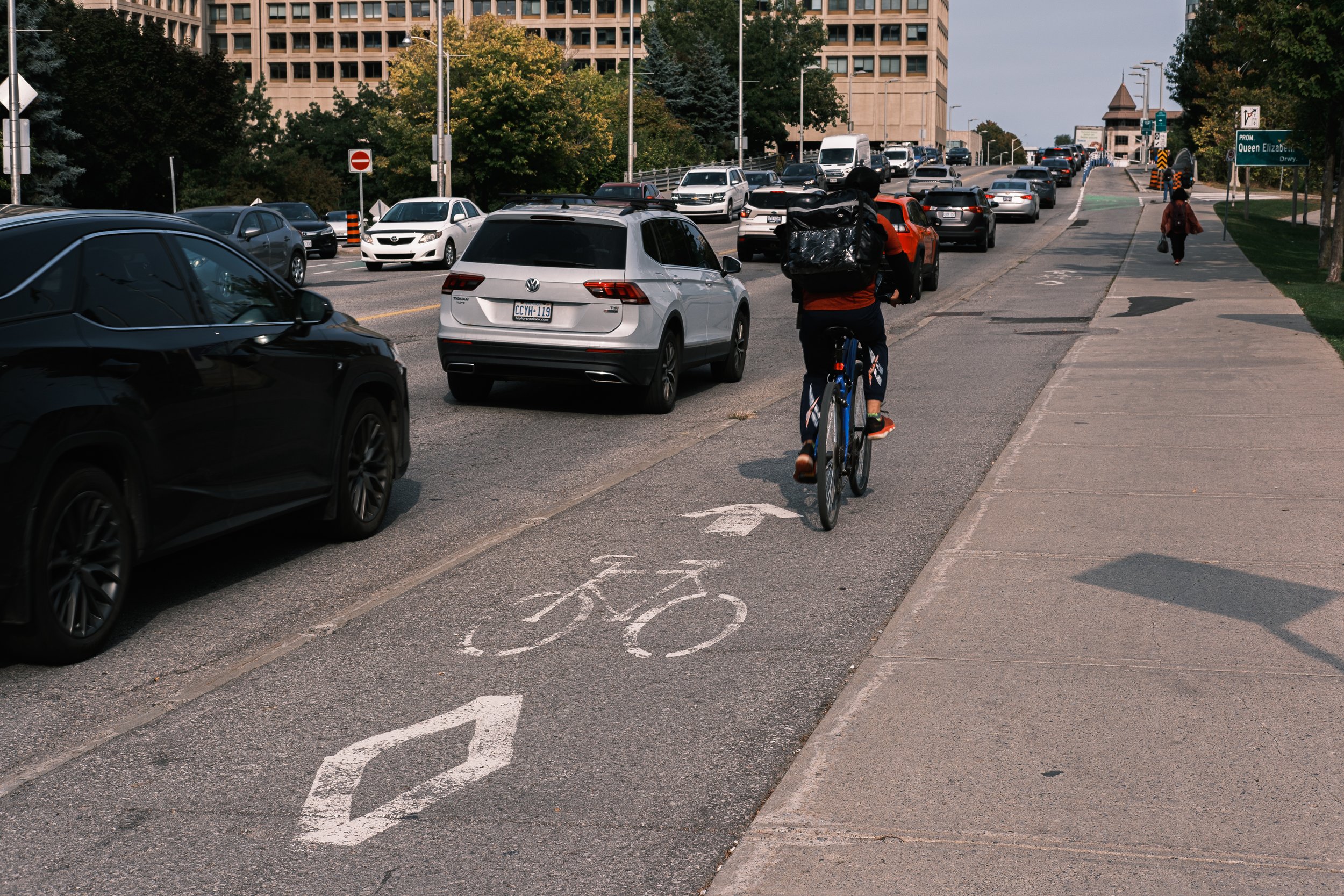
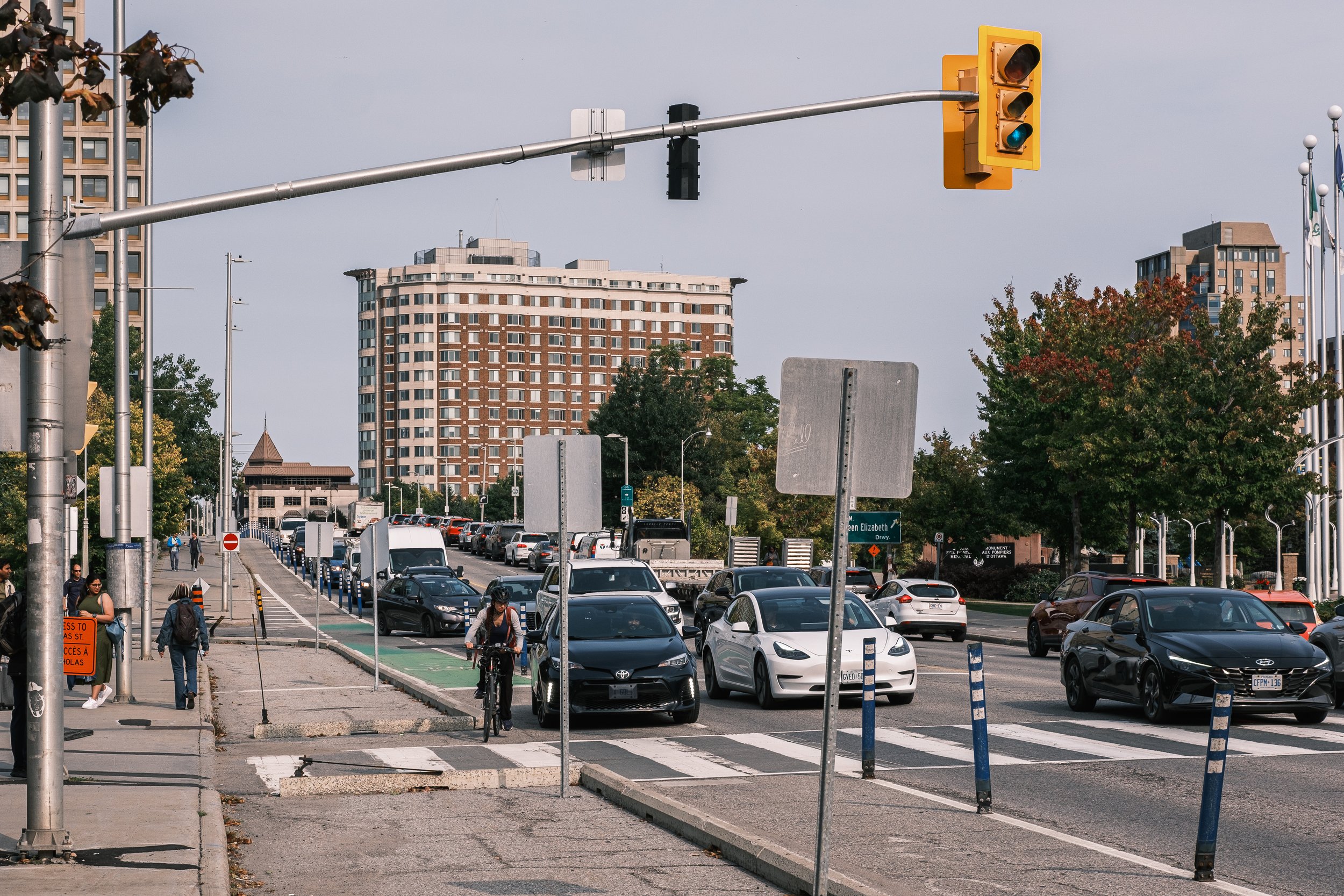
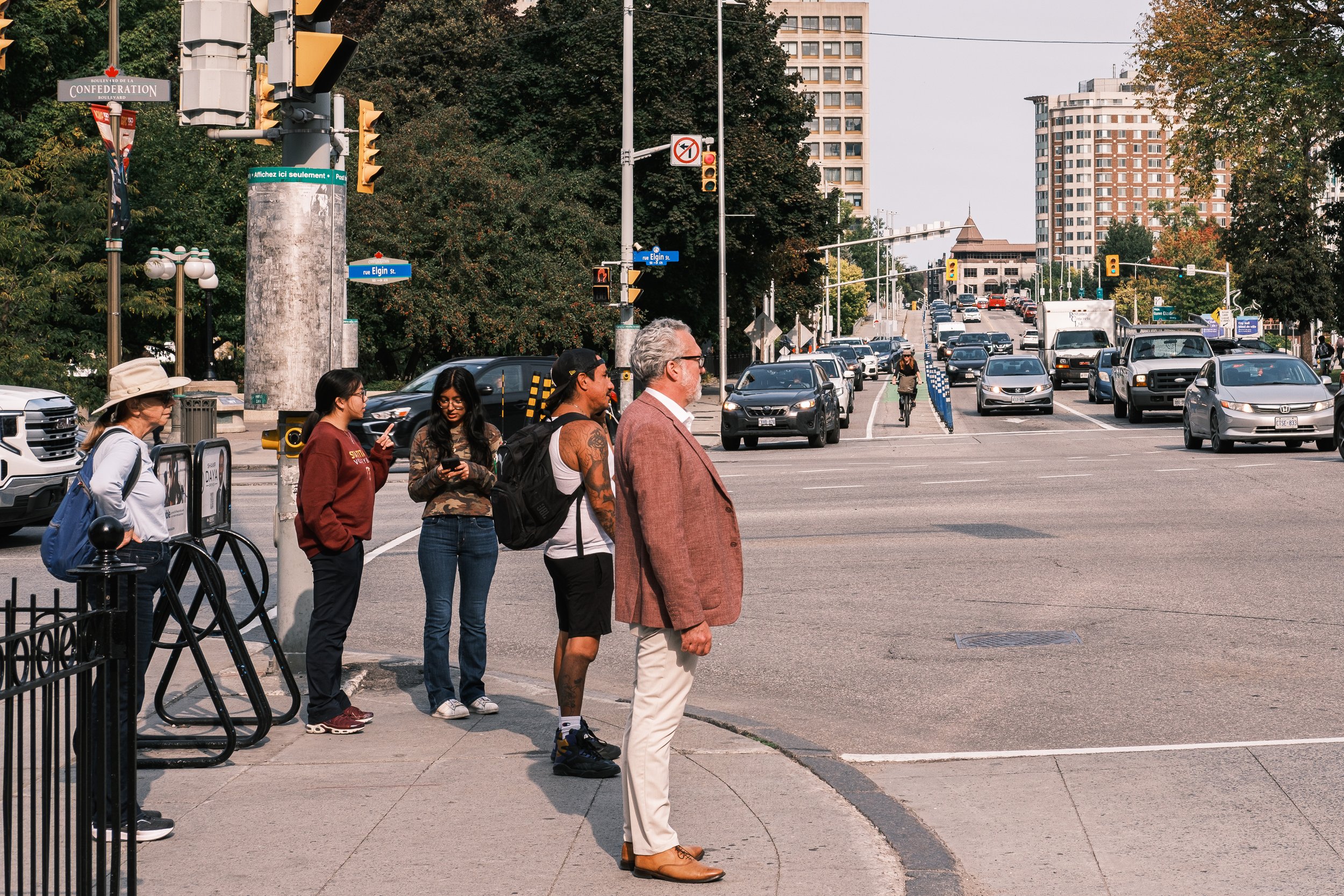
Continuous Sidewalks and Bike Paths
A new addition to the Ottawa streetscape are continuous sidewalks and bike paths. You’ll find these ones on Rue O’Connor, a retrofit design to slow down turning traffic and improve safety. It’s early days, but my limited observations would suggest they’re working well. The design varies slightly from current examples, in that there is a slight dip intended to be detectable by those with sight loss, albeit the conclusion seems to be it is not. I did share some thoughts on updated TWSI use for continuous sidewalks in my presentation, more on that another time. I did like the use of yellow bollards, the really force drivers to make a tight and slow turn.
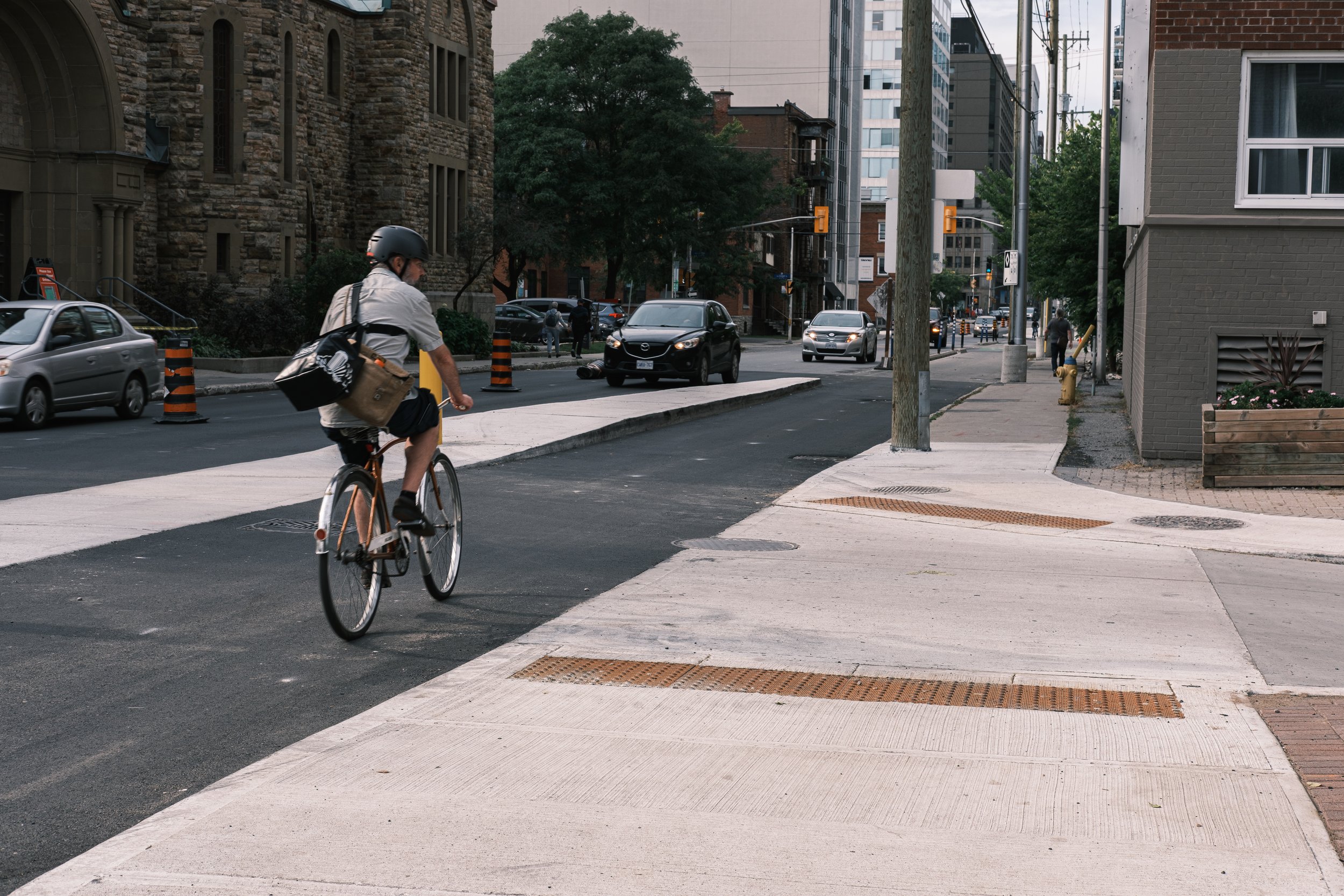
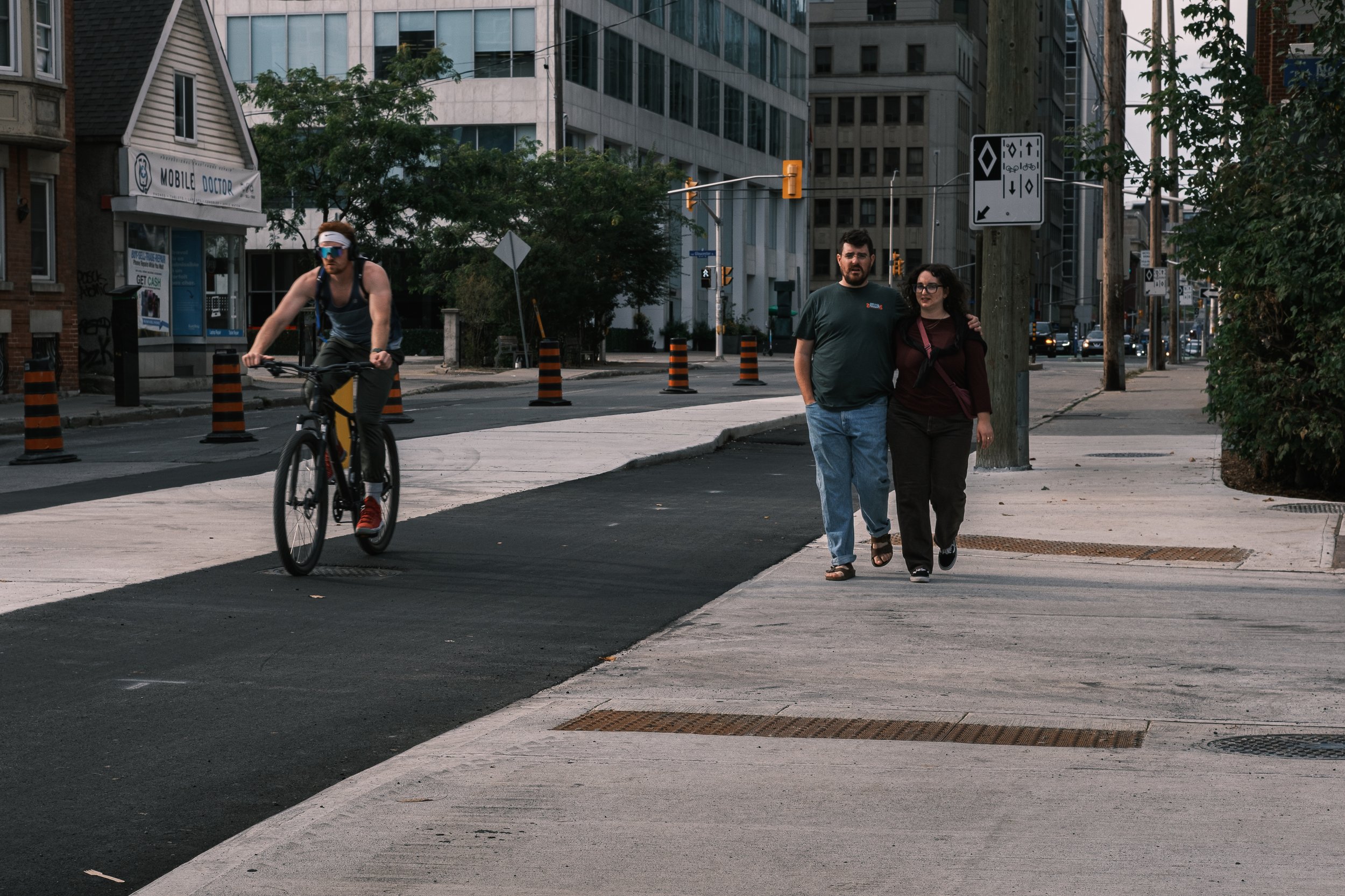
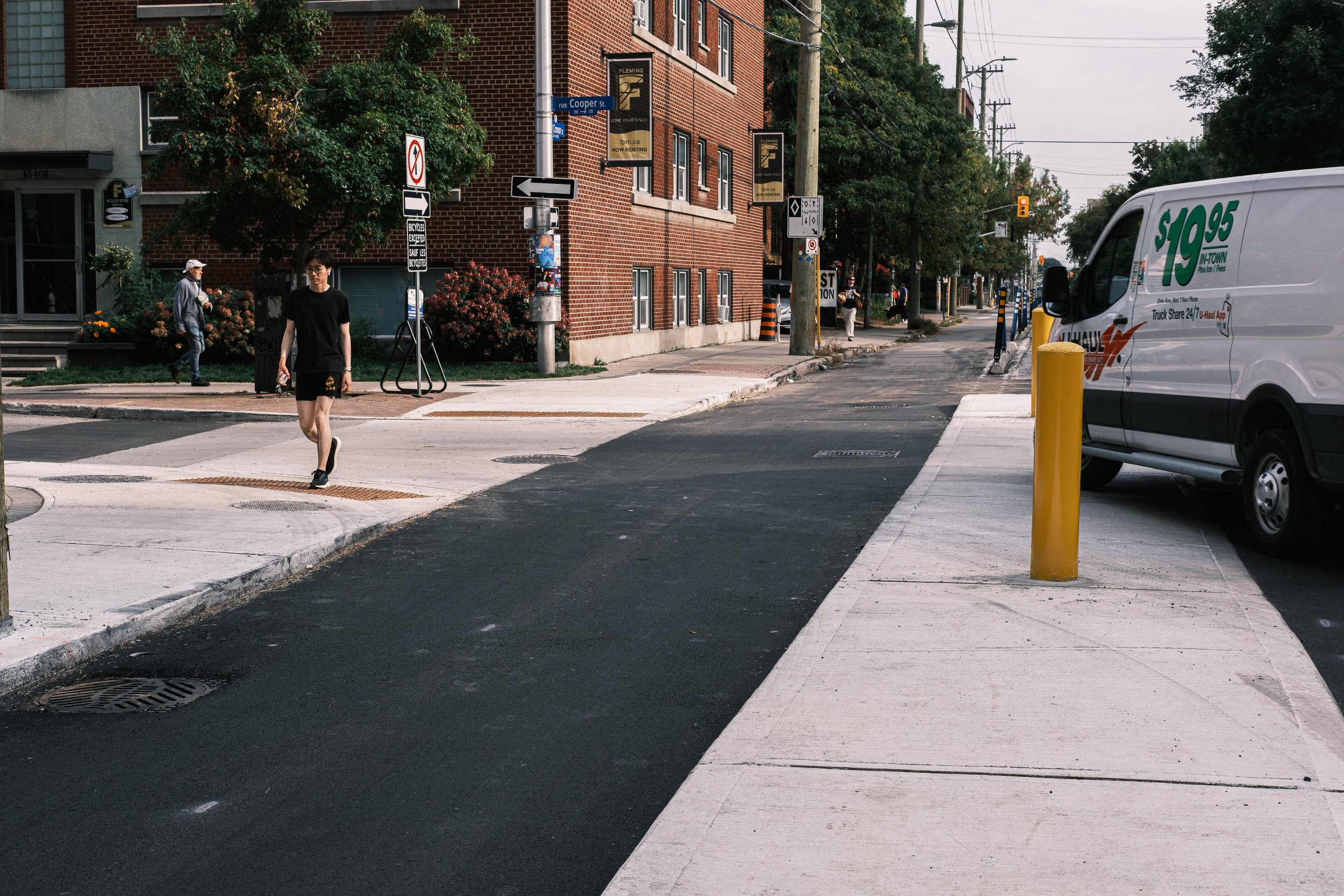
Tactile Wayfinding
The development around the TD Place football stadium in one of those top photos is interesting in that the sidewalks all feature tactile wayfinding for those with sight loss, albeit quite low contrast. In a world trying to be more inclusive, it’s probably time we provided tactile wayfinding throughout the pedestrian realm.
Transit
Just a few notes on transit things that caught my interest. First, a raised crosswalk on a major transit route was interesting as we often shy away from vertical deflection on bus routes, but it’s clearly possible.
Another weird one appeared as I round a corner while biking back to the airport and come across a “Transitway” that seems like it dropped out of the 80’s, with a remote and quite dark waiting area, I’m curious about this service and the facility, it sounds like BRT, but i’m not sure…
I also rode the O-Train, Ottawa’s LRT service. It felt much like SkyTrain in Vancouver but with a driver. I was able to tap in and out with my credit card which while relatively standard these days was still nice and convienient.
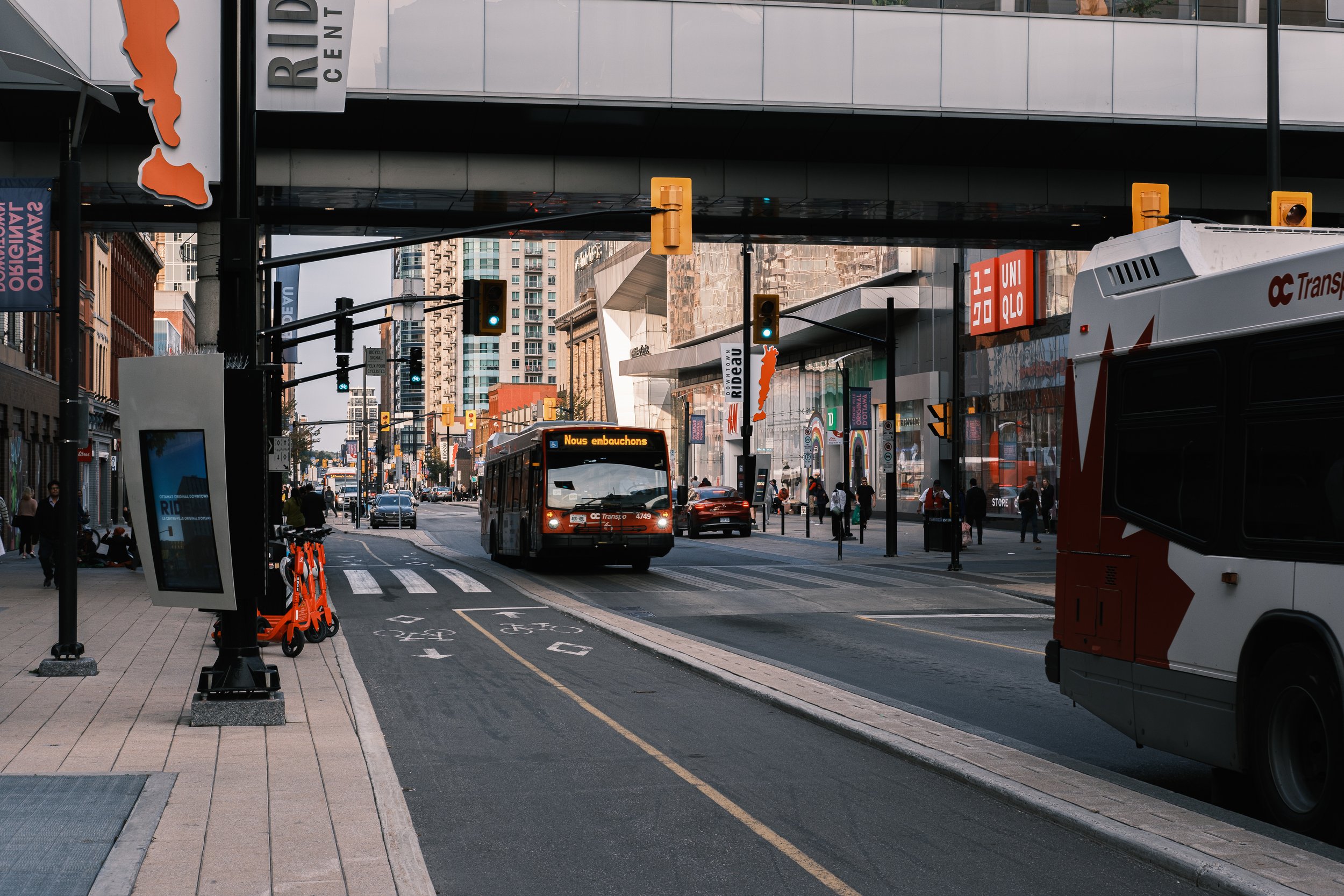
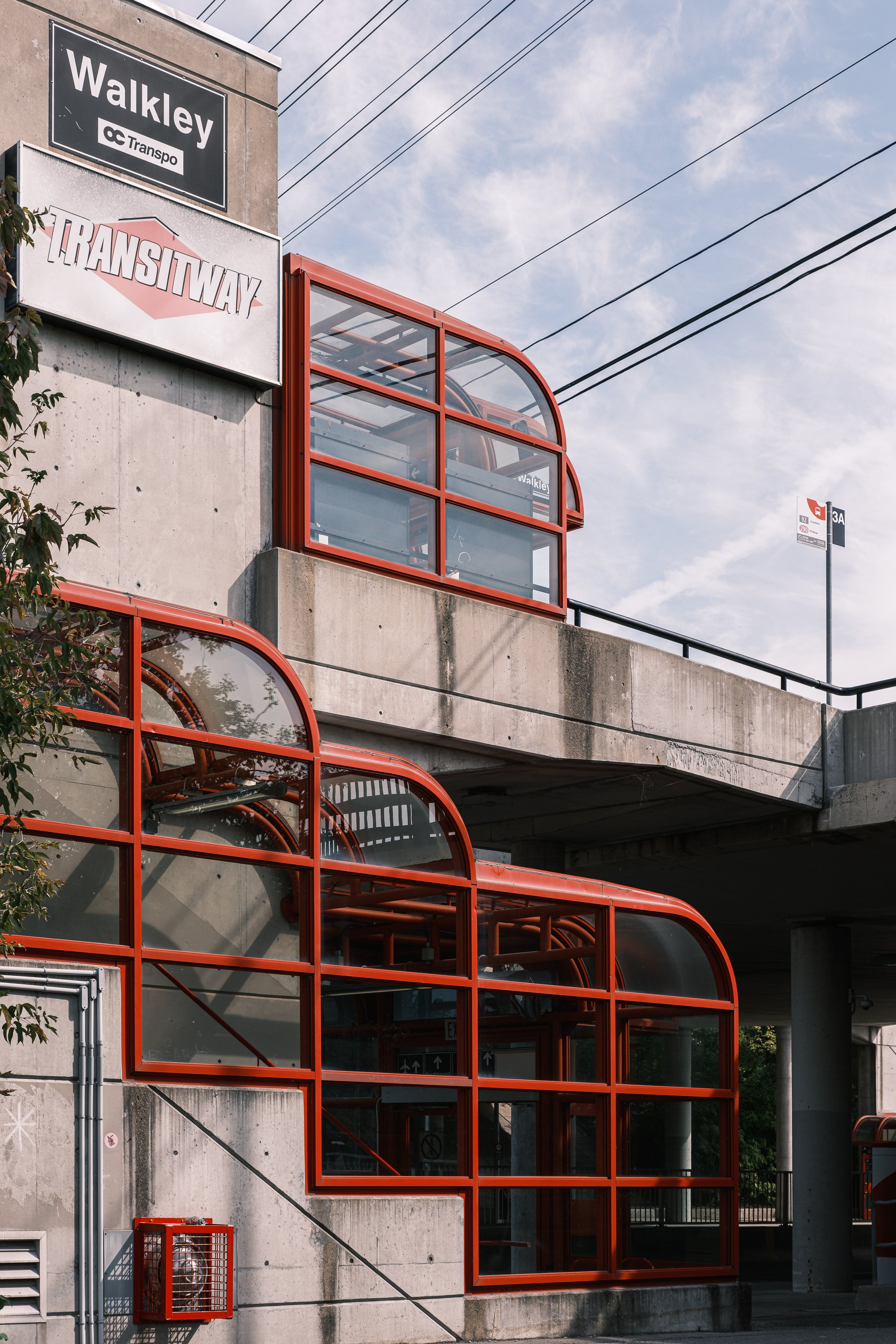
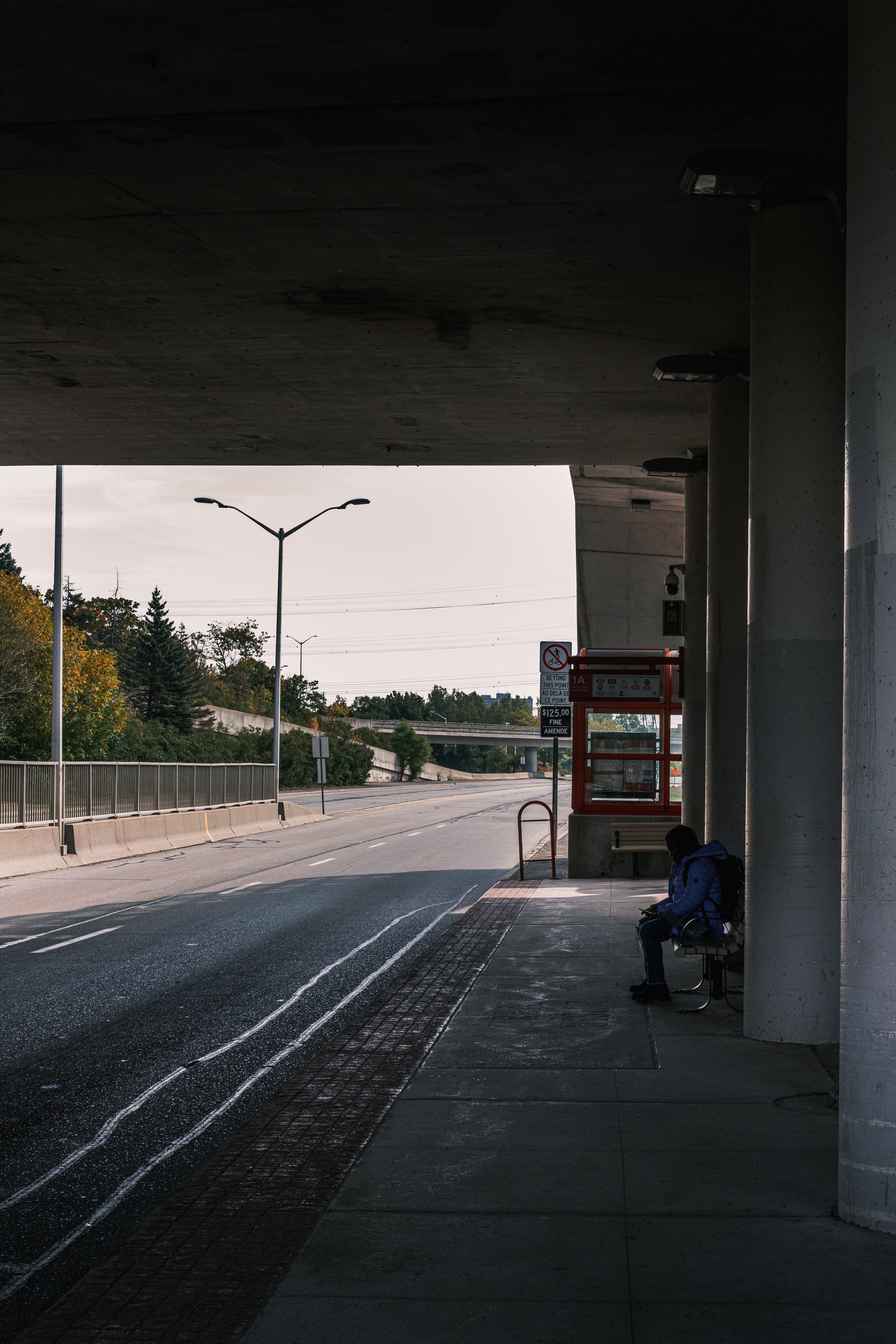
Randoms
These are just some other random and slightly interesting photos from my week in Ottawa.
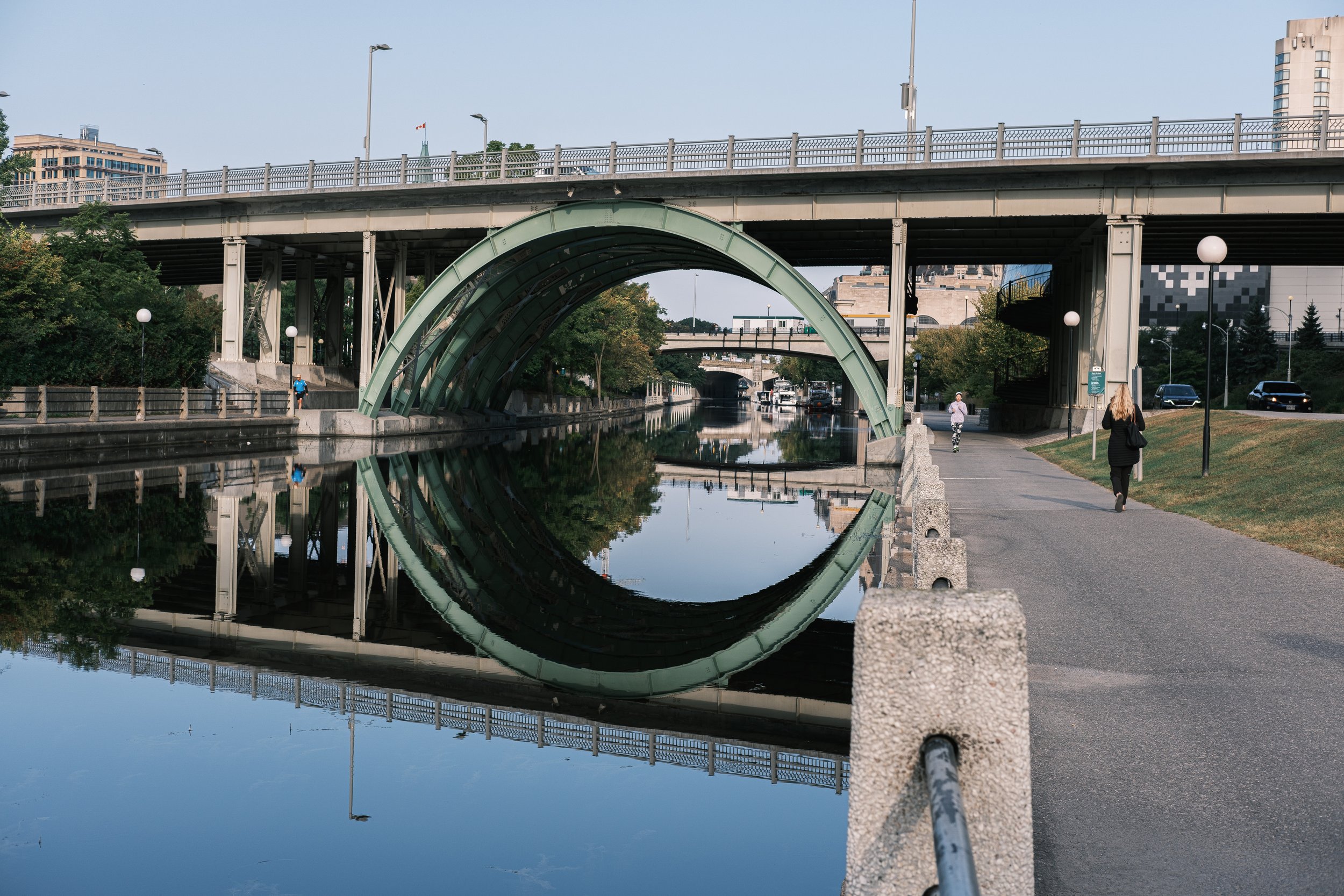

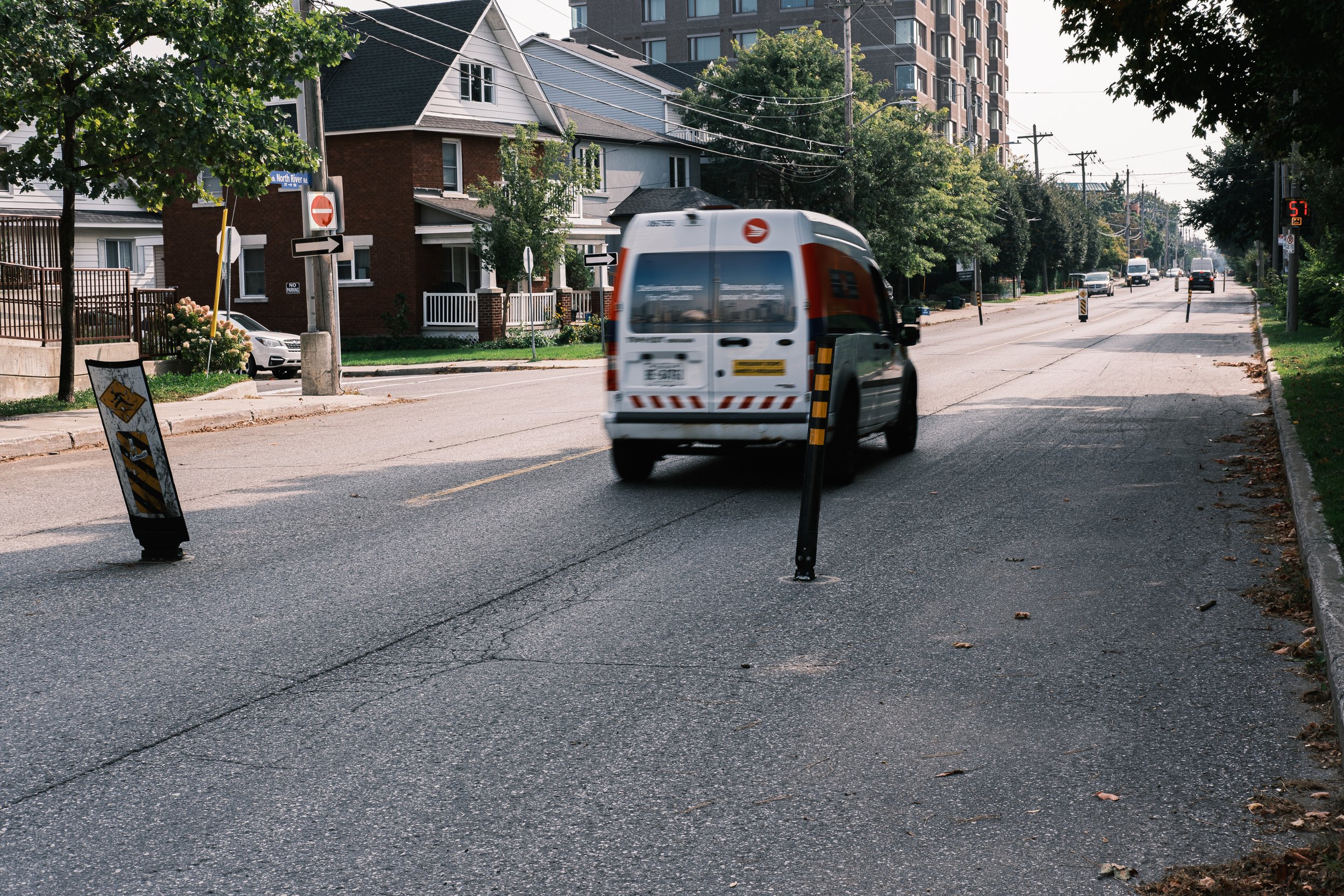
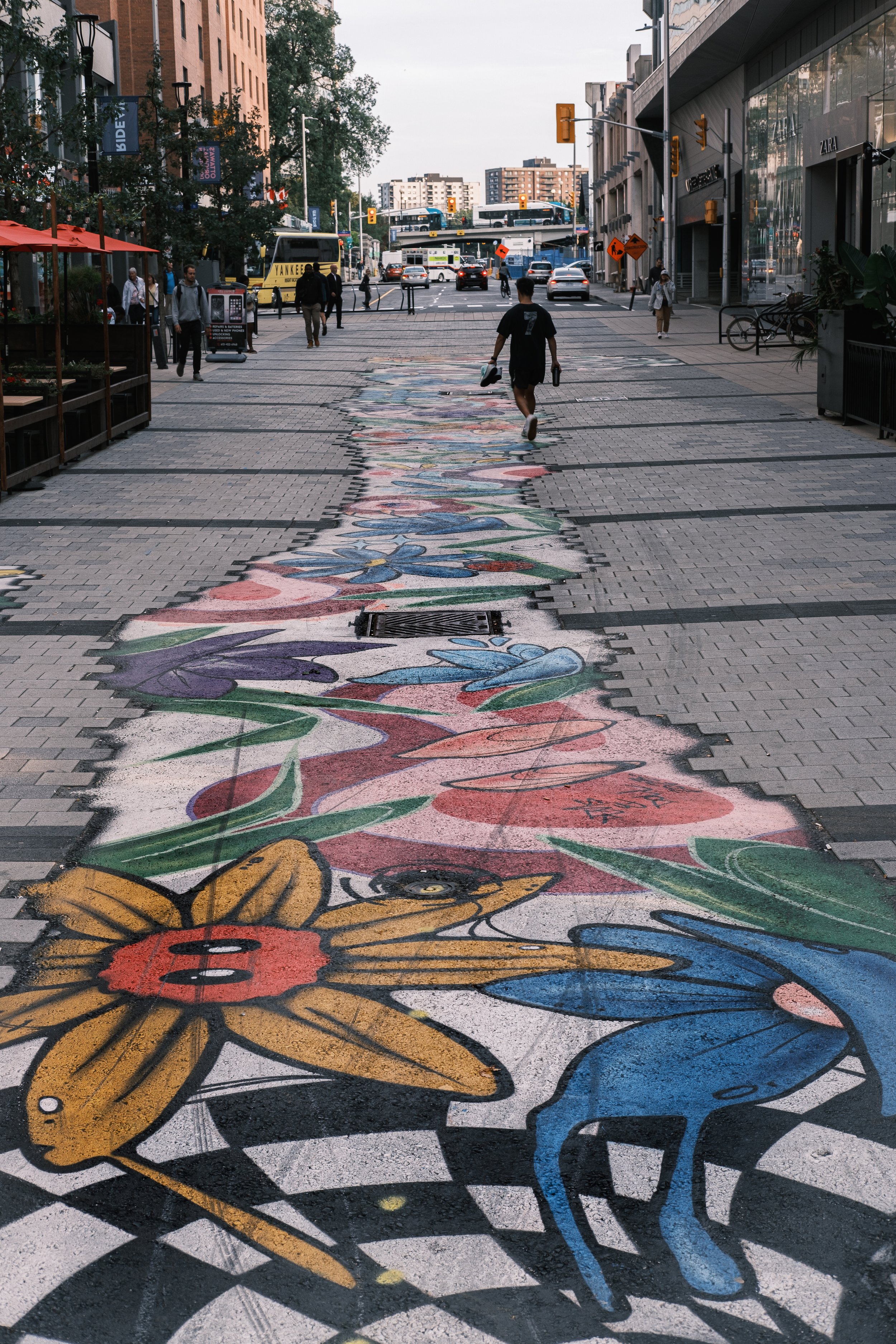
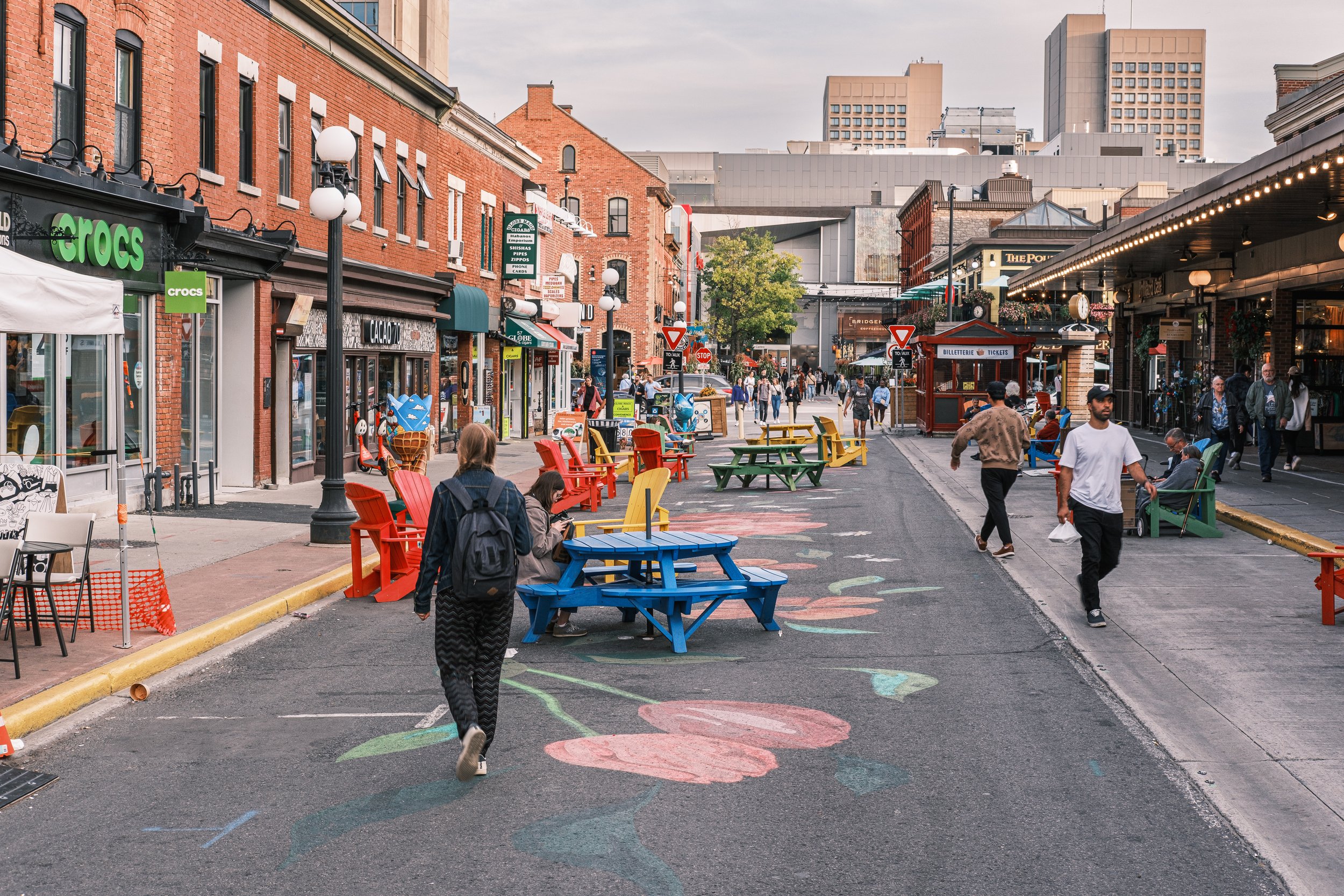

Riding to the Airport
I’ve ridden the Brompton to or from the airport a few times now, but it still amazes me each time that I can ride my bike with everything I need to travel with it, and just pack it all up (or unpack it) at the airport. Anyway, with an 11am checkout and 6pm flight, I took the scenic route to the airport. Here are a few photos along the way…
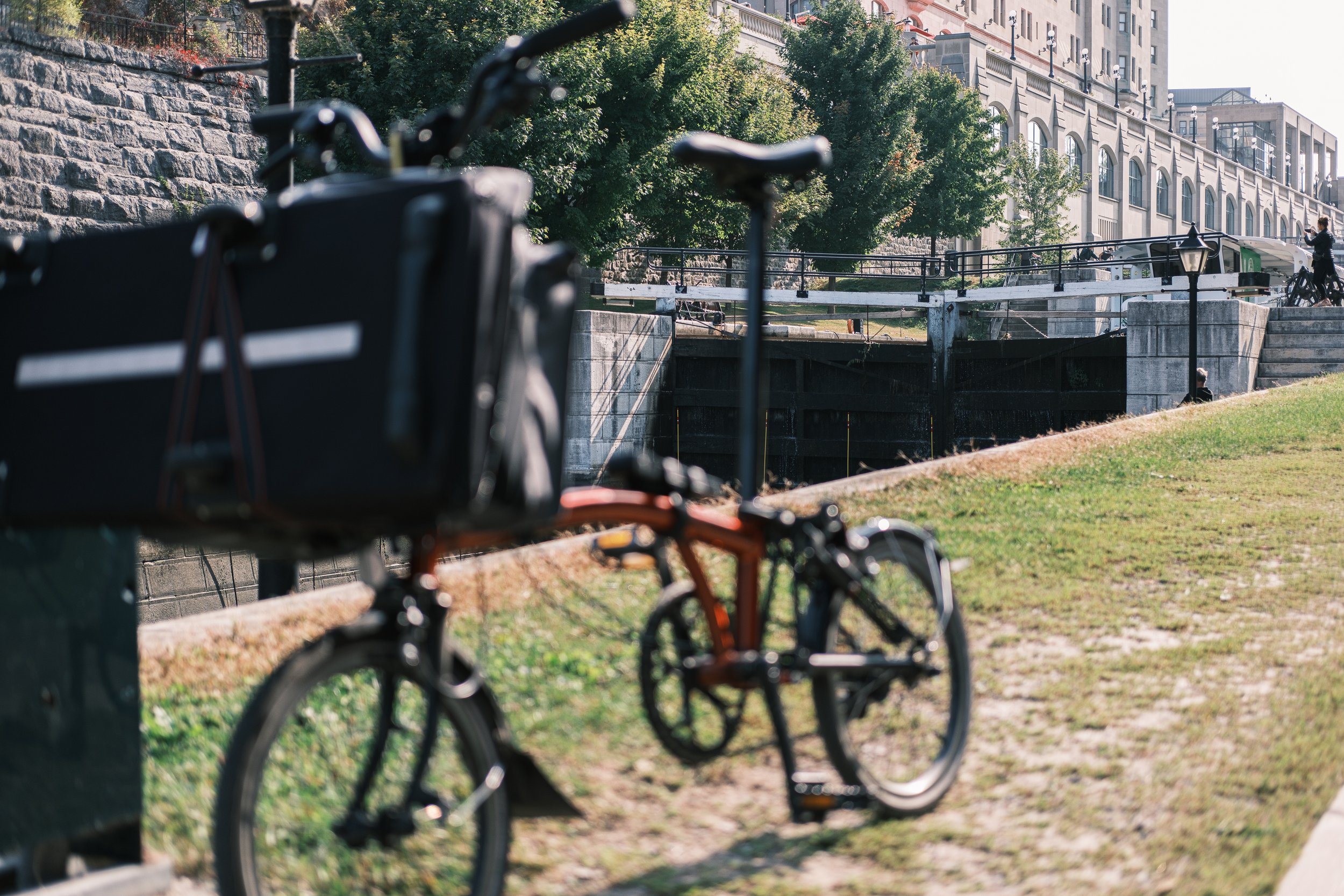
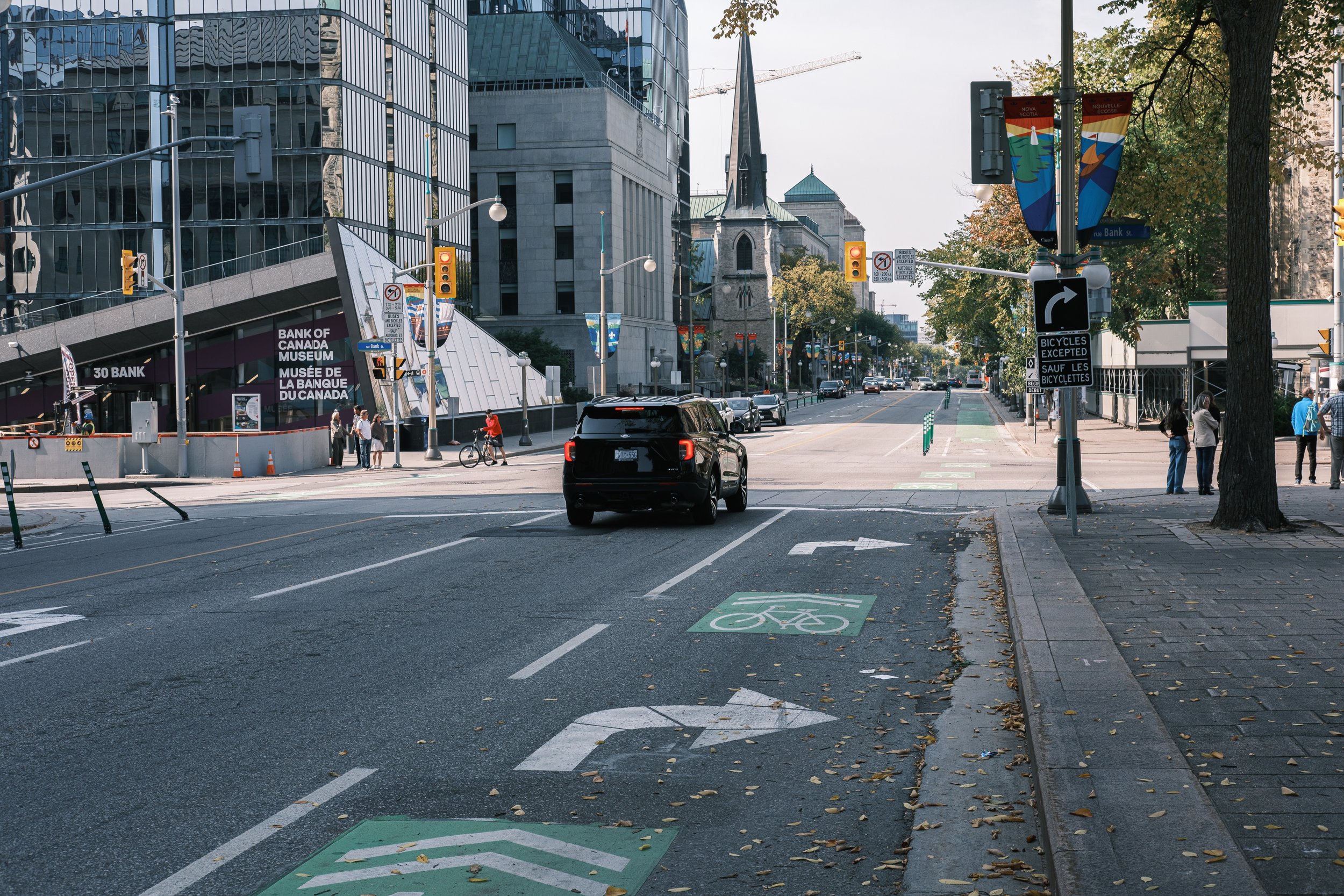
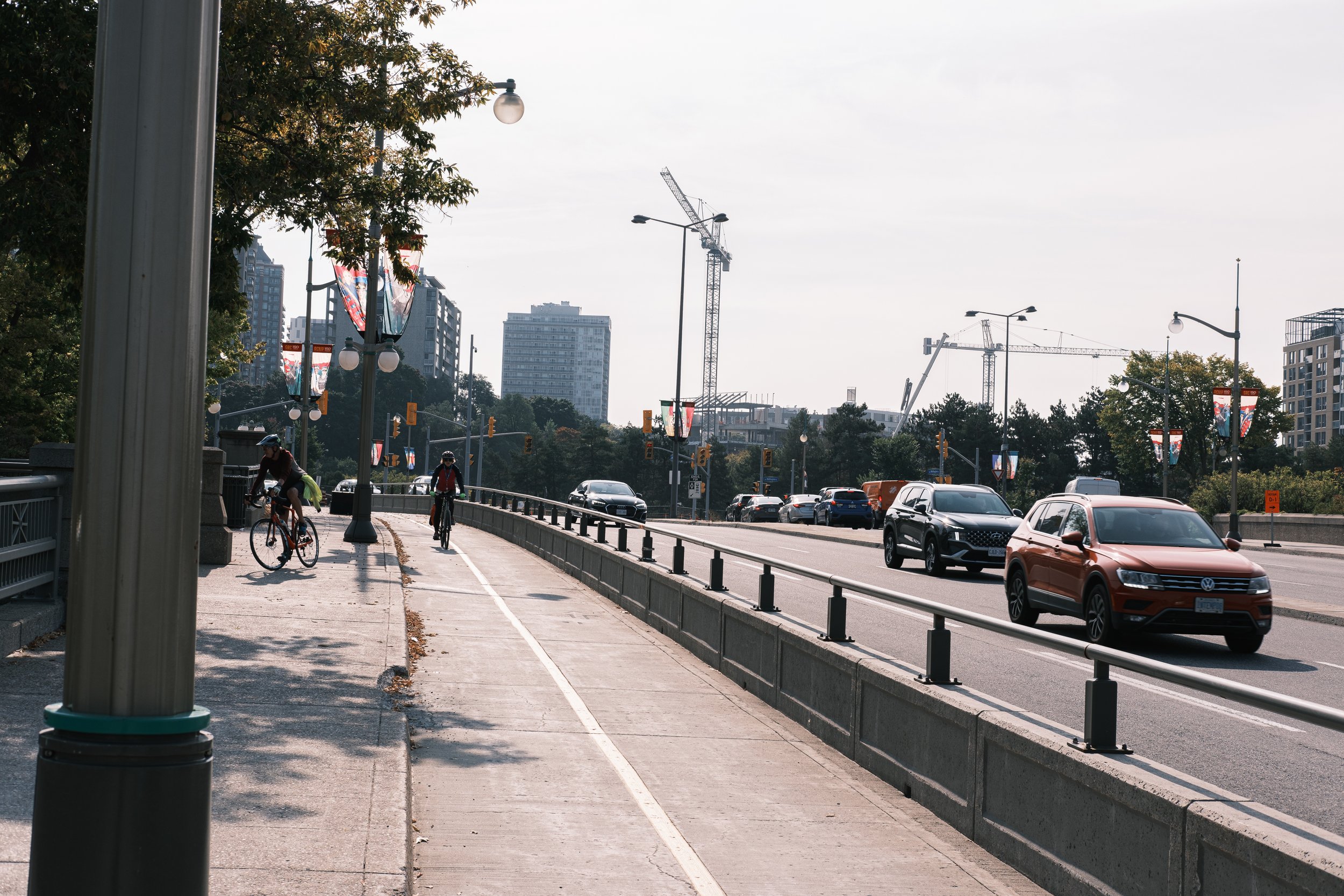
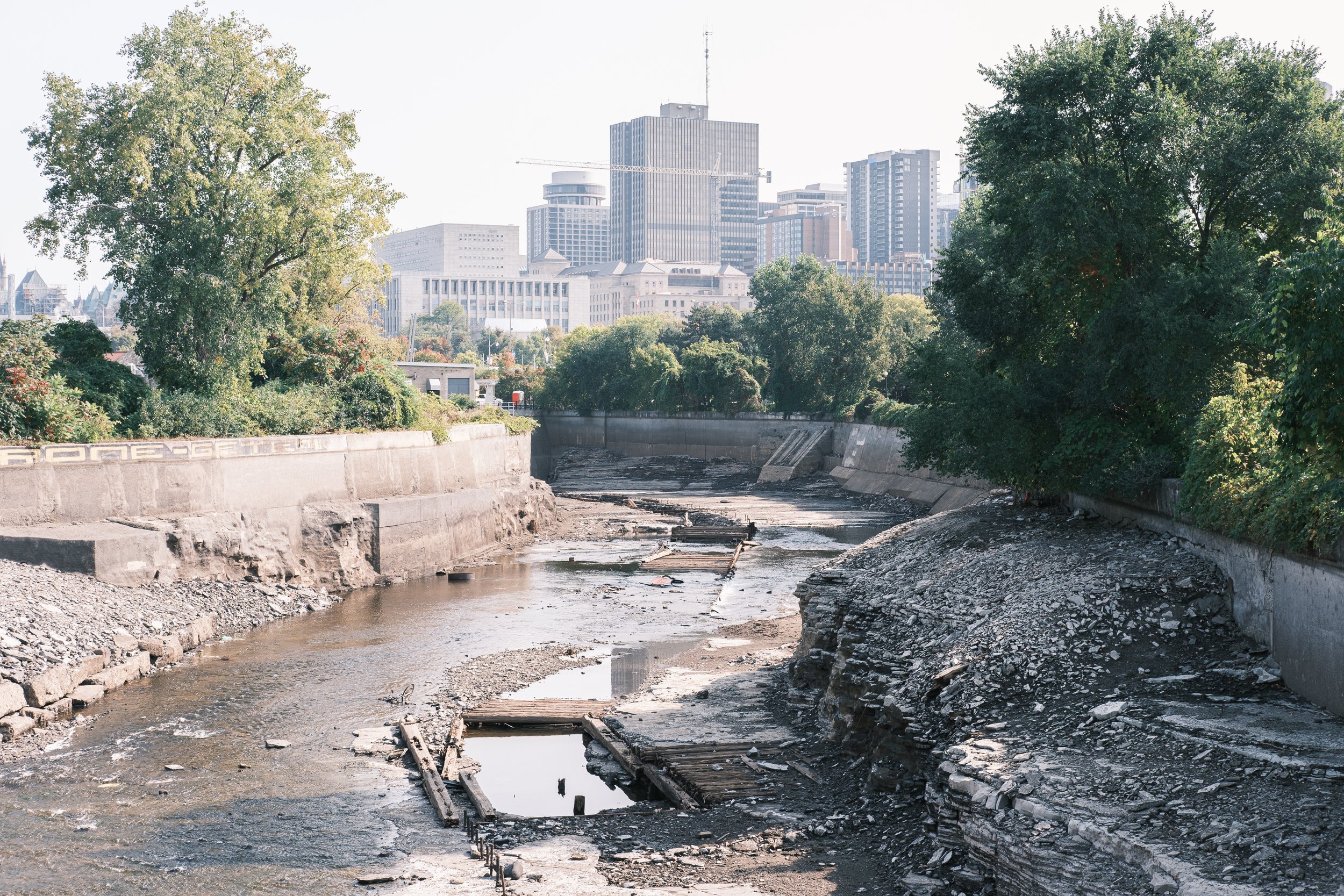
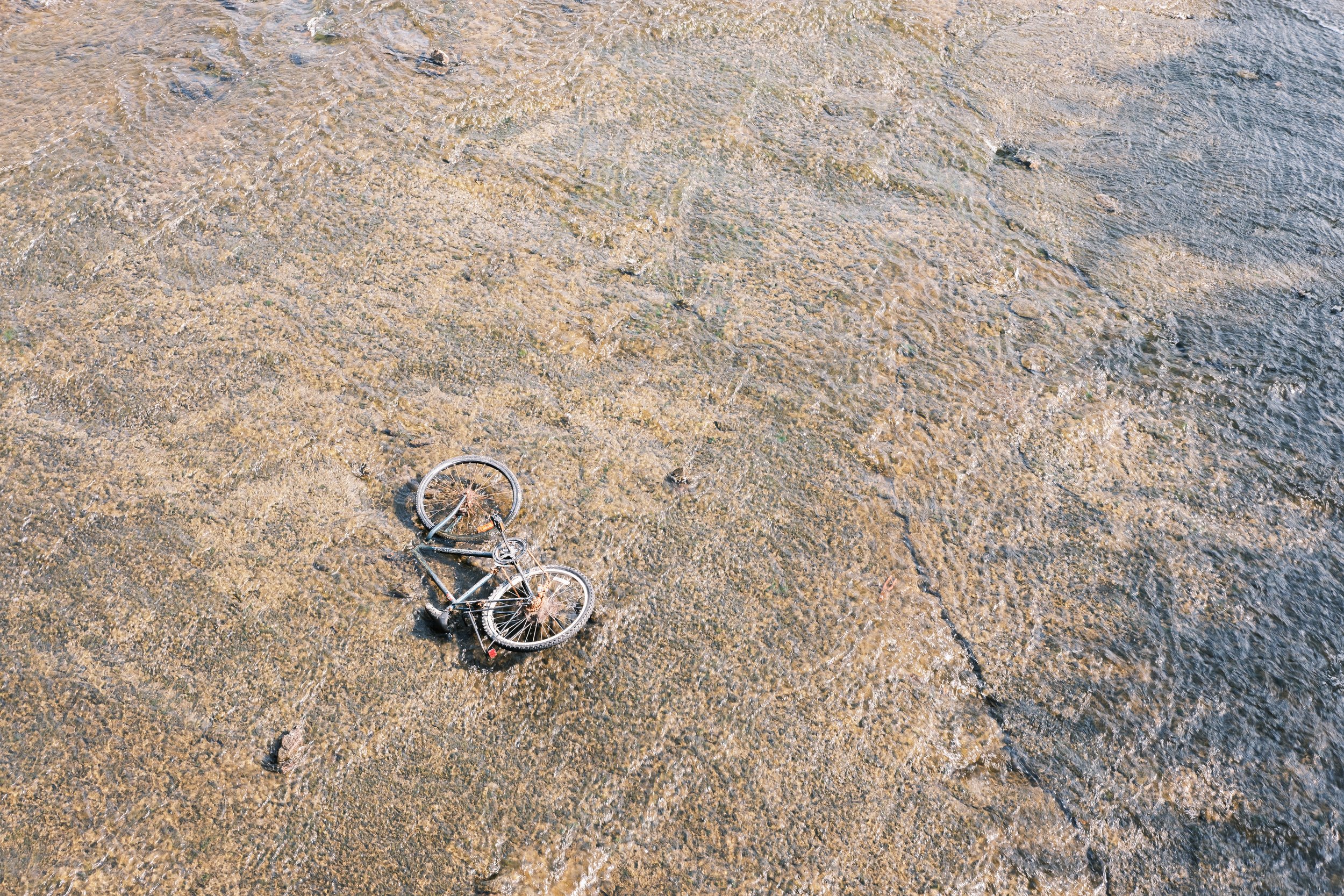

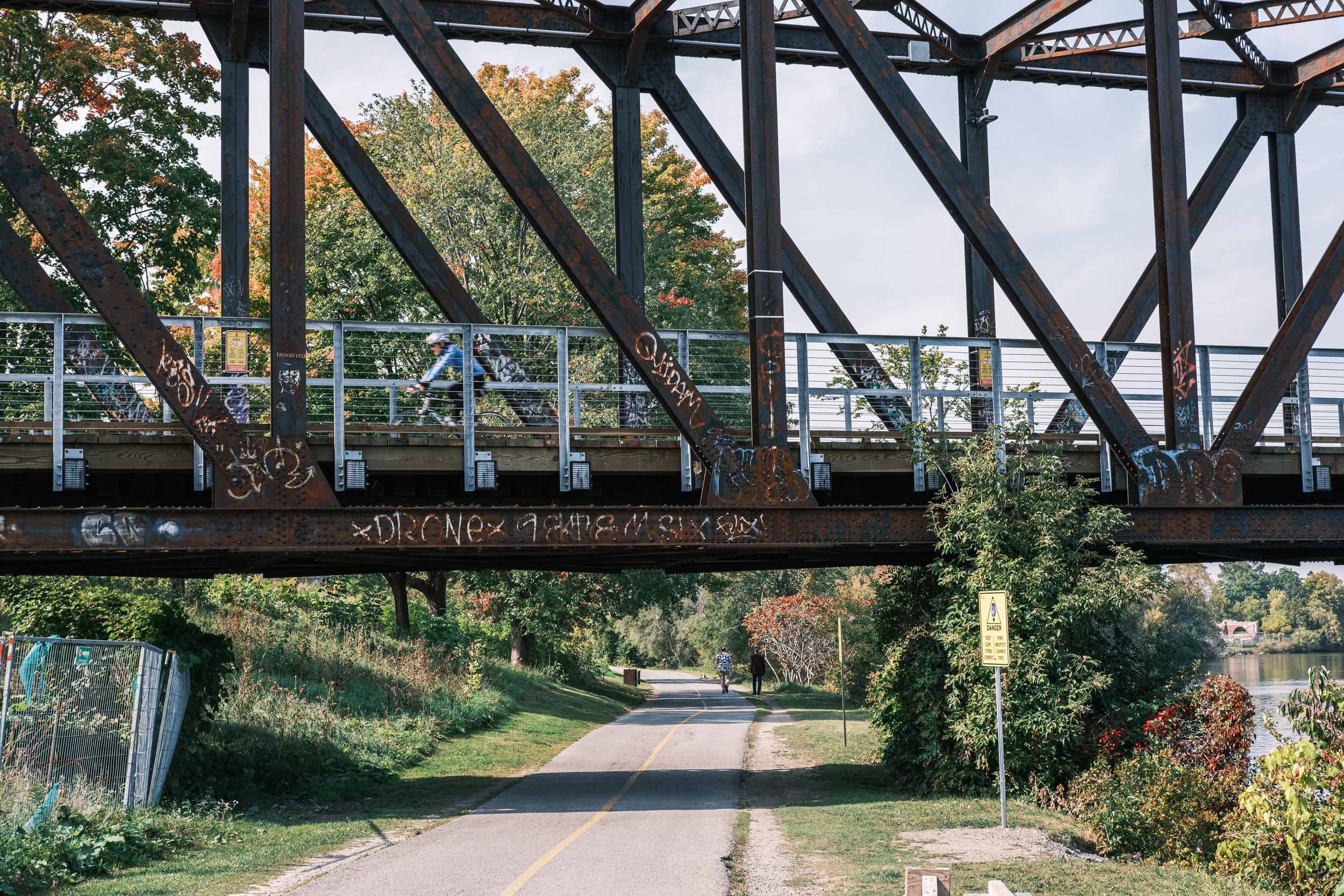
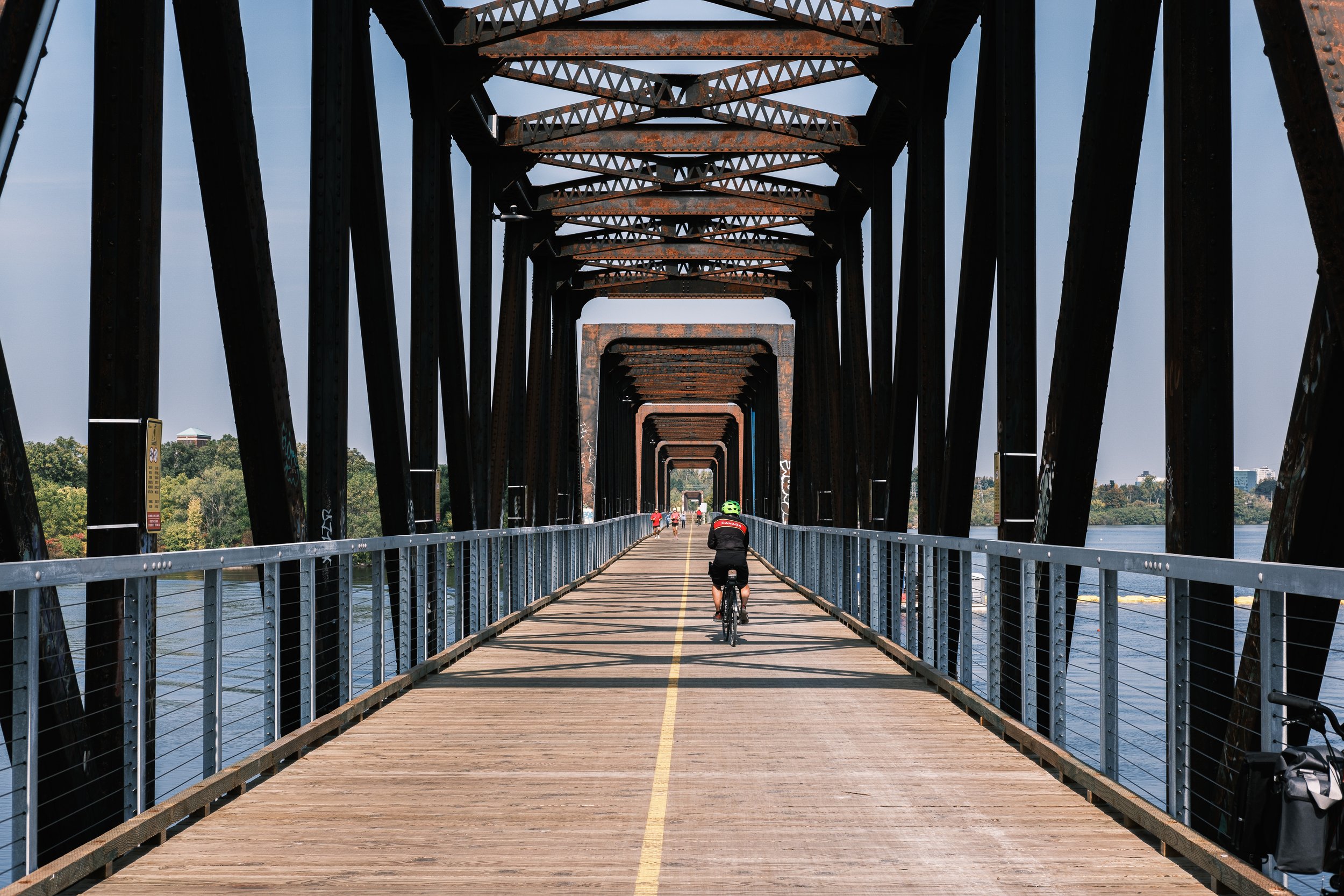
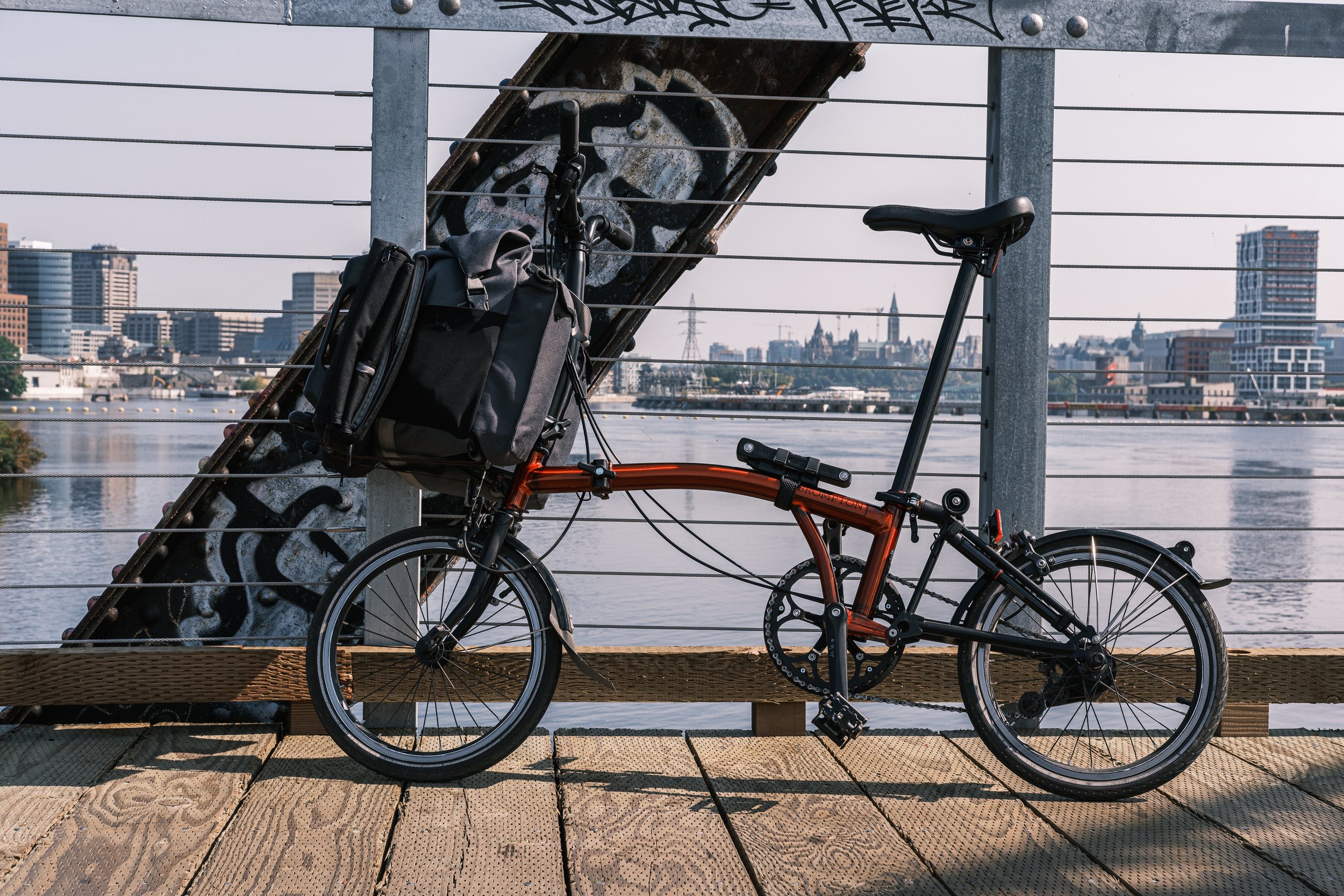
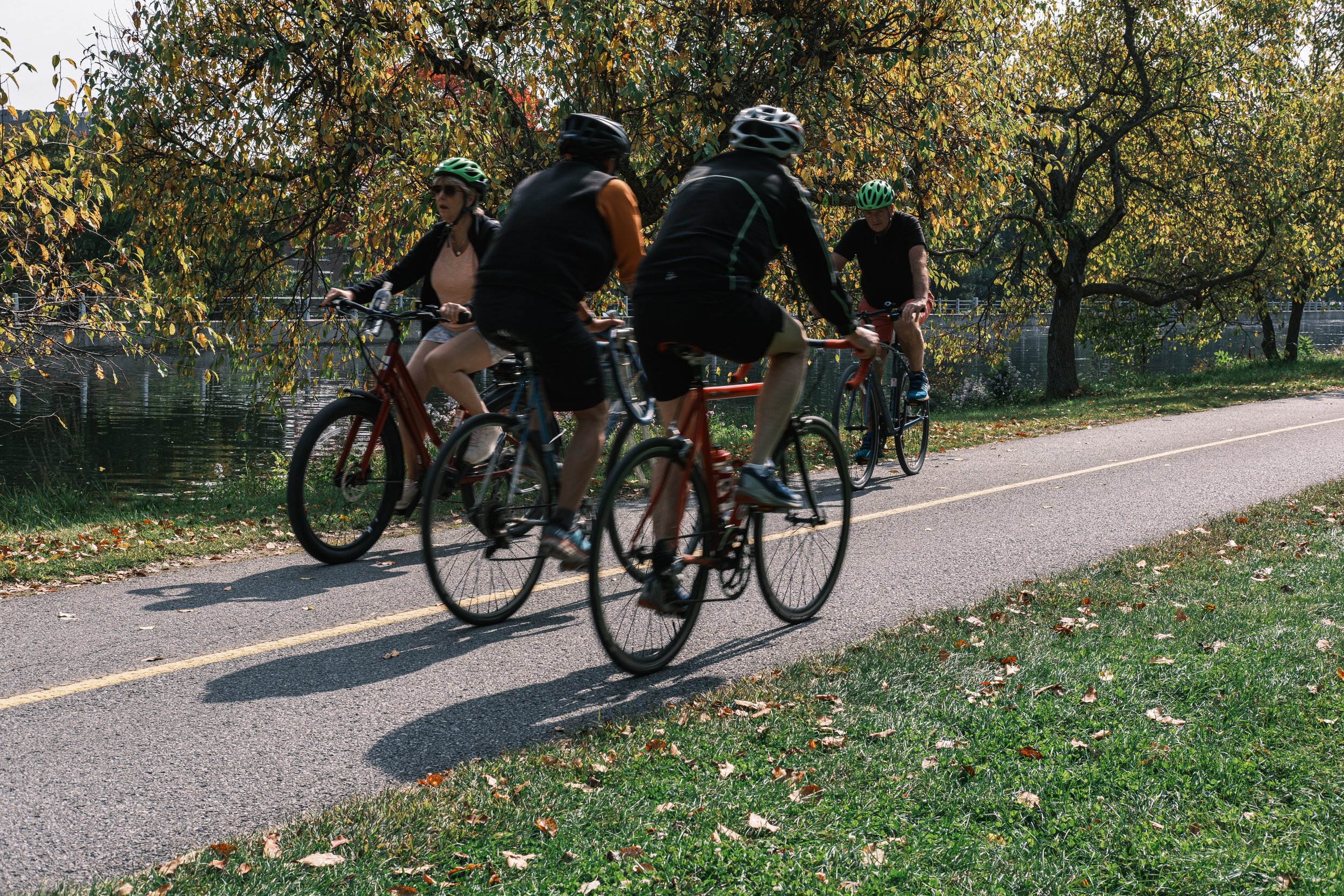


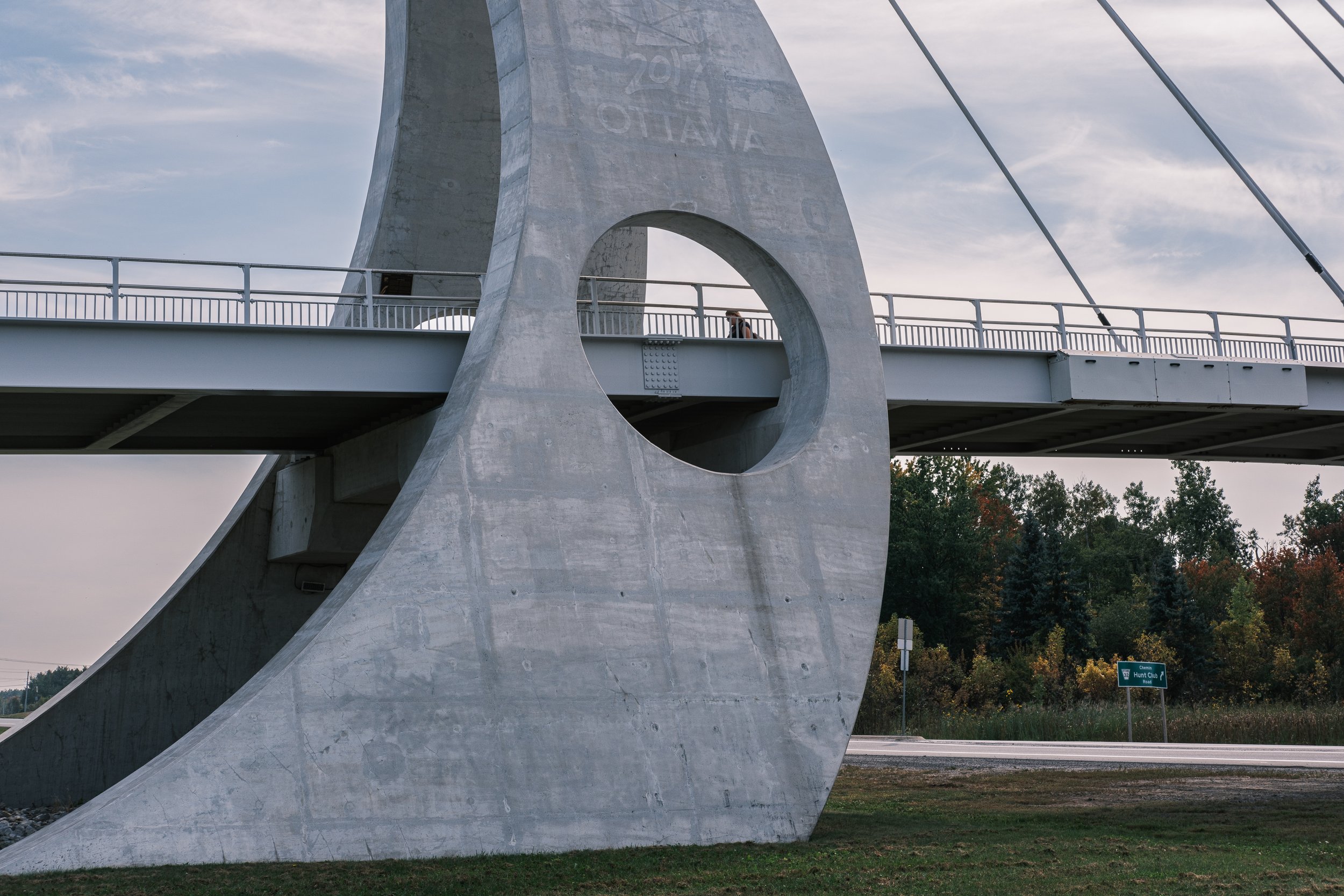
I killed a bit more time at the airport taking a few photos of the packing up process to show how it all goes from on the bike to on the plane…
If you were wondering about the comprehension testing question. The sign means there is a bike rental ahead. I honestly wondered if there was a fine for riding either inside or outside the hours shown. Now you know…
Finally, keep an eye out for the Montreal blog which should be up a few weeks after this.





